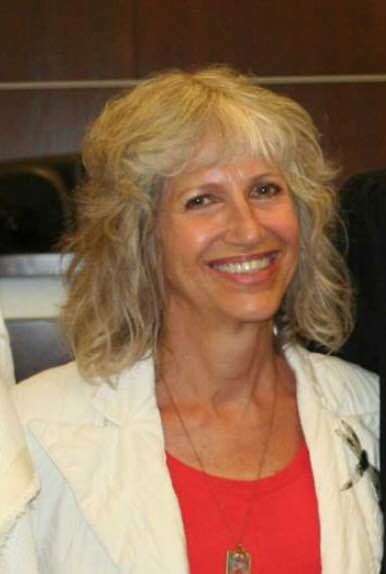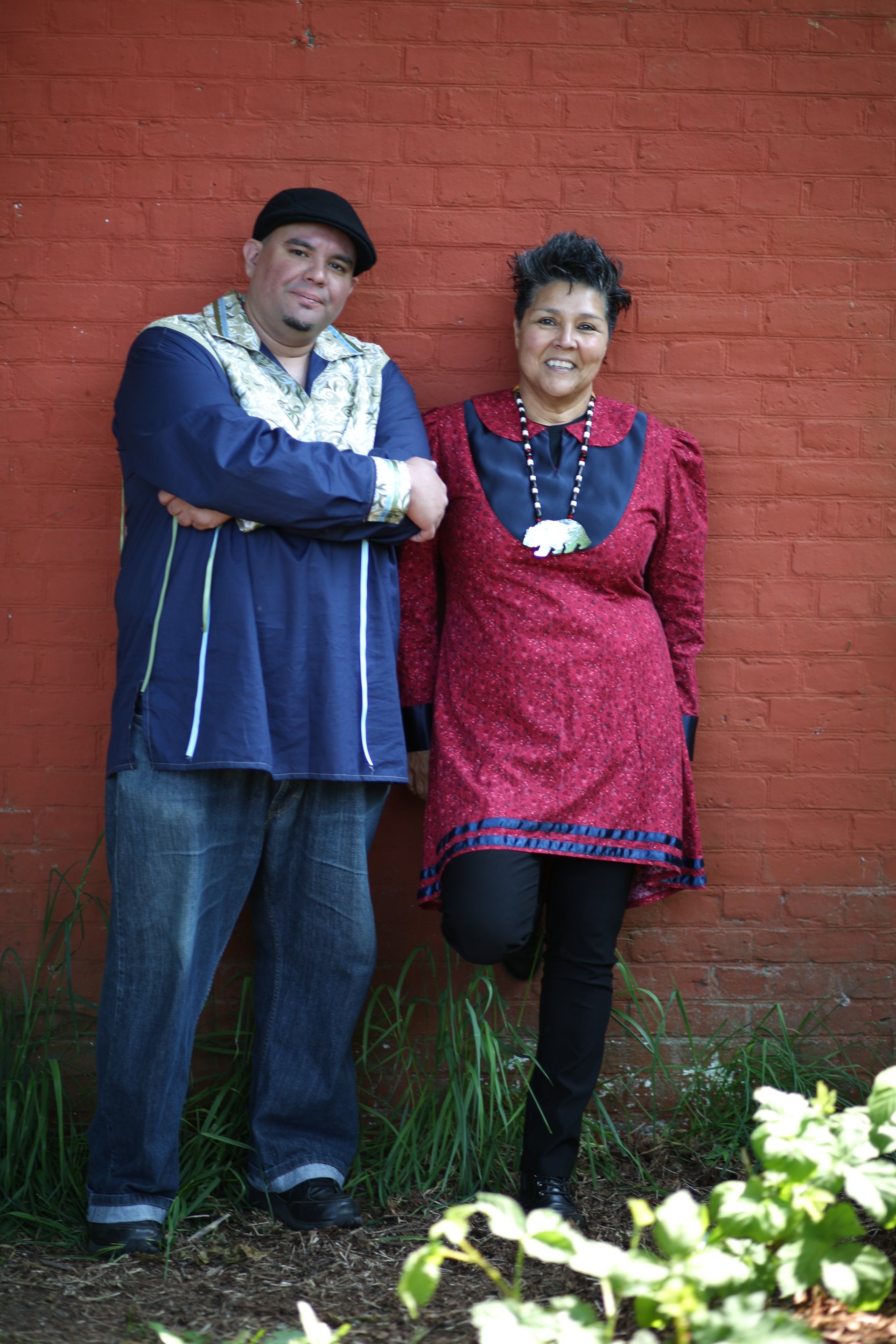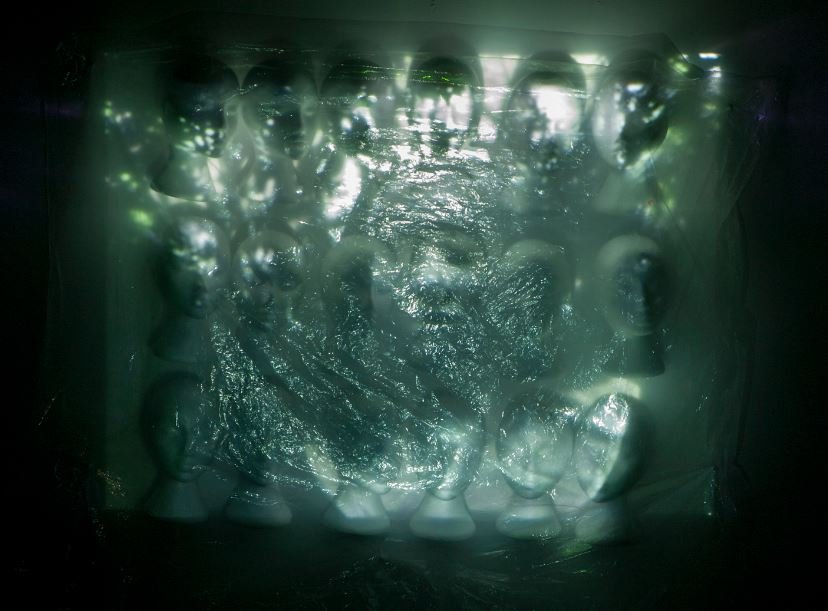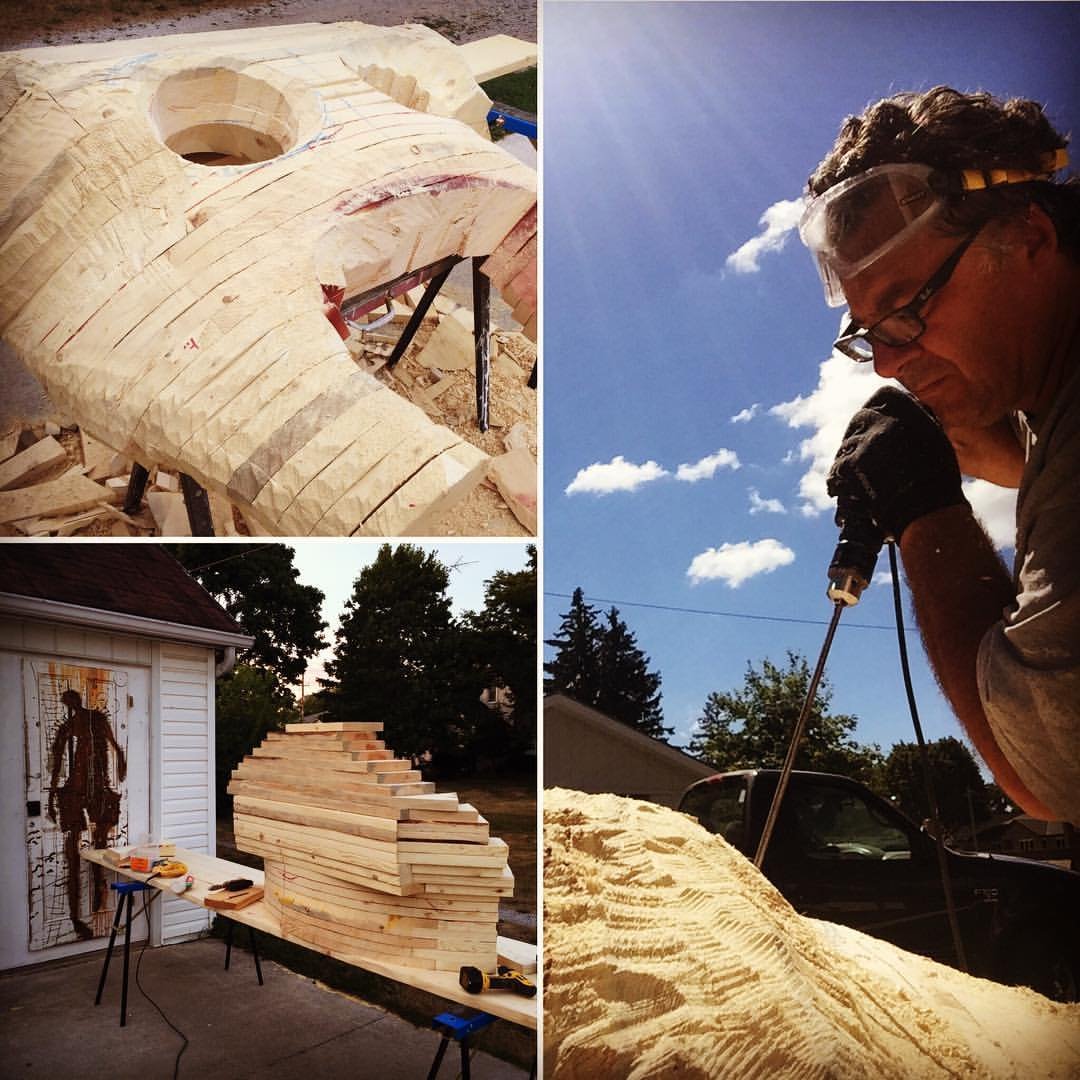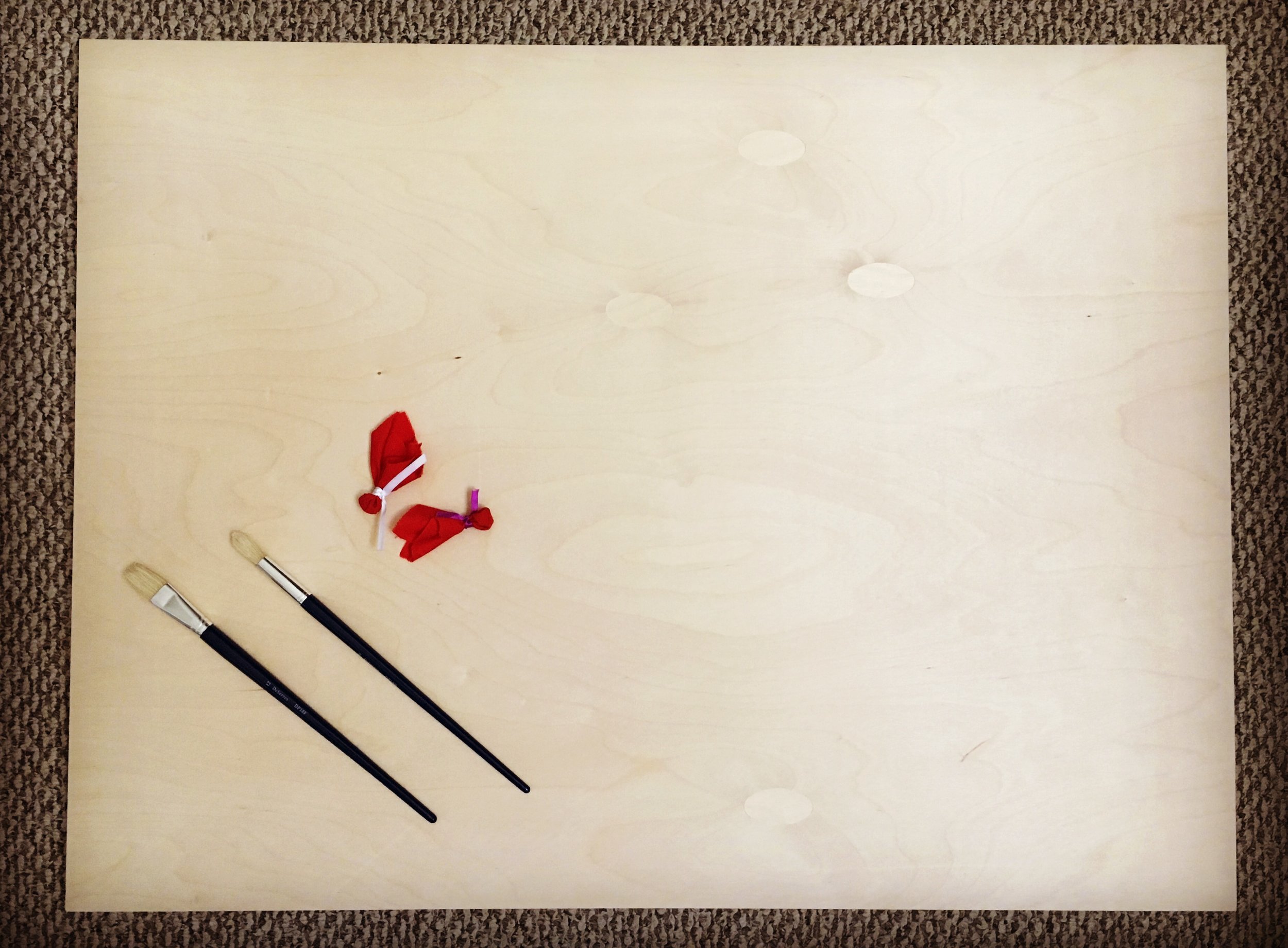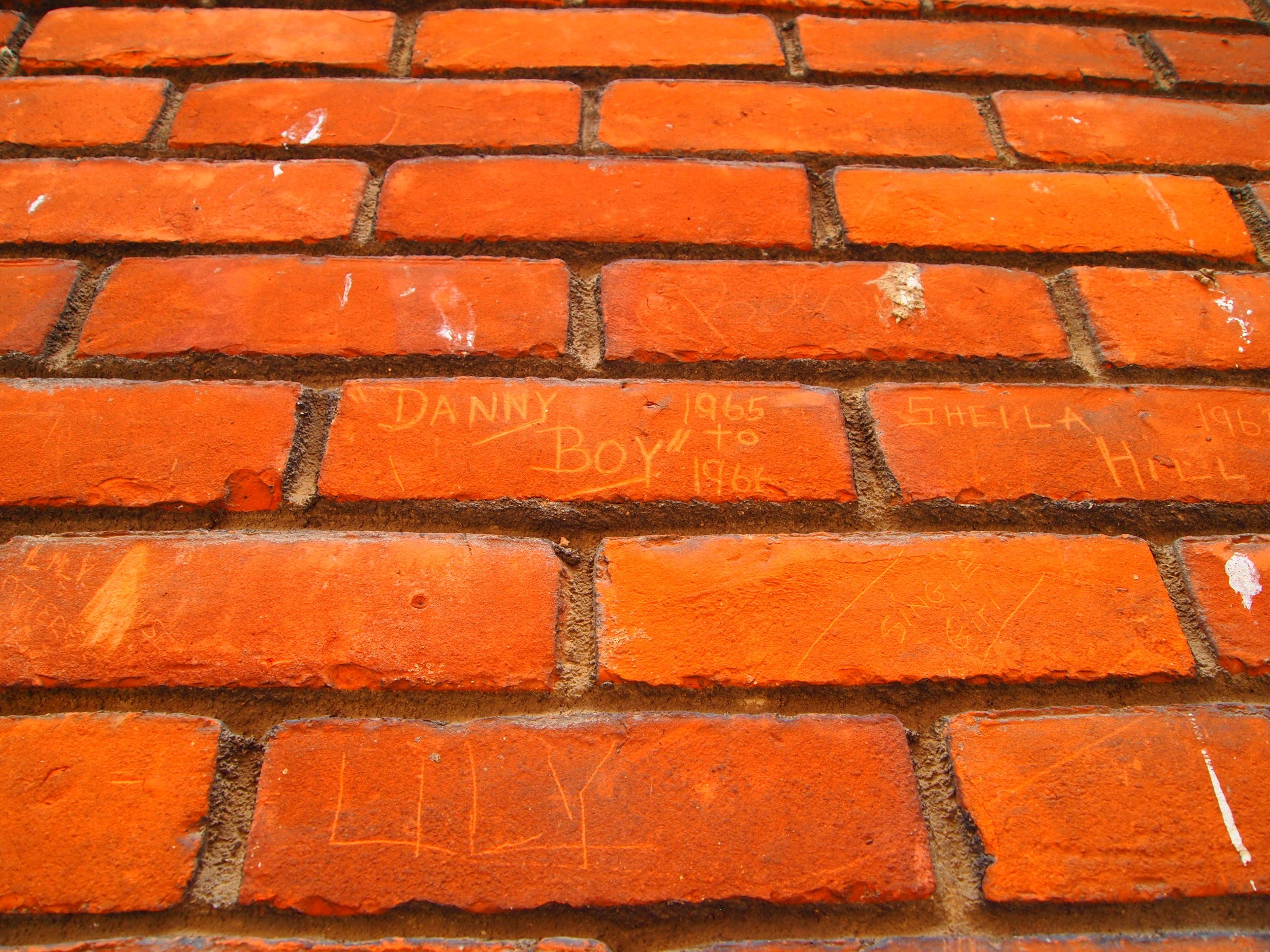The Mush
Hole Project
On June 2, 2015, the Honorable Justice Murray Sinclair released the Final Report of the Truth and Reconciliation Committee (TRC) with 94 recommendations for Canada’s federal government. In response to the TRC’s Calls to Action, as well as to foster collaborations between Indigenous and non-Indigenous communities, and engage with the Woodland Cultural Centre’s campaign to Save the Evidence, this project’s objective is to produce an immersive, site-specific art and performance installation that responds to the former residential school, the Mohawk Institute, or the Mush Hole as the students called it. The Mush Hole Project will produce a unique and robust gathering of artists, cultural institutions, multidisciplinary practitioners, academics, and residential school representatives among others, to raise awareness concerning underrepresented issues in scholarship, as well as in public, private, and educational sectors. The project’s aim is to gain understanding, share and acknowledge histories and contemporary issues, and activate the space for knowledges, stories, and voices to be heard, remembered, and transformed.
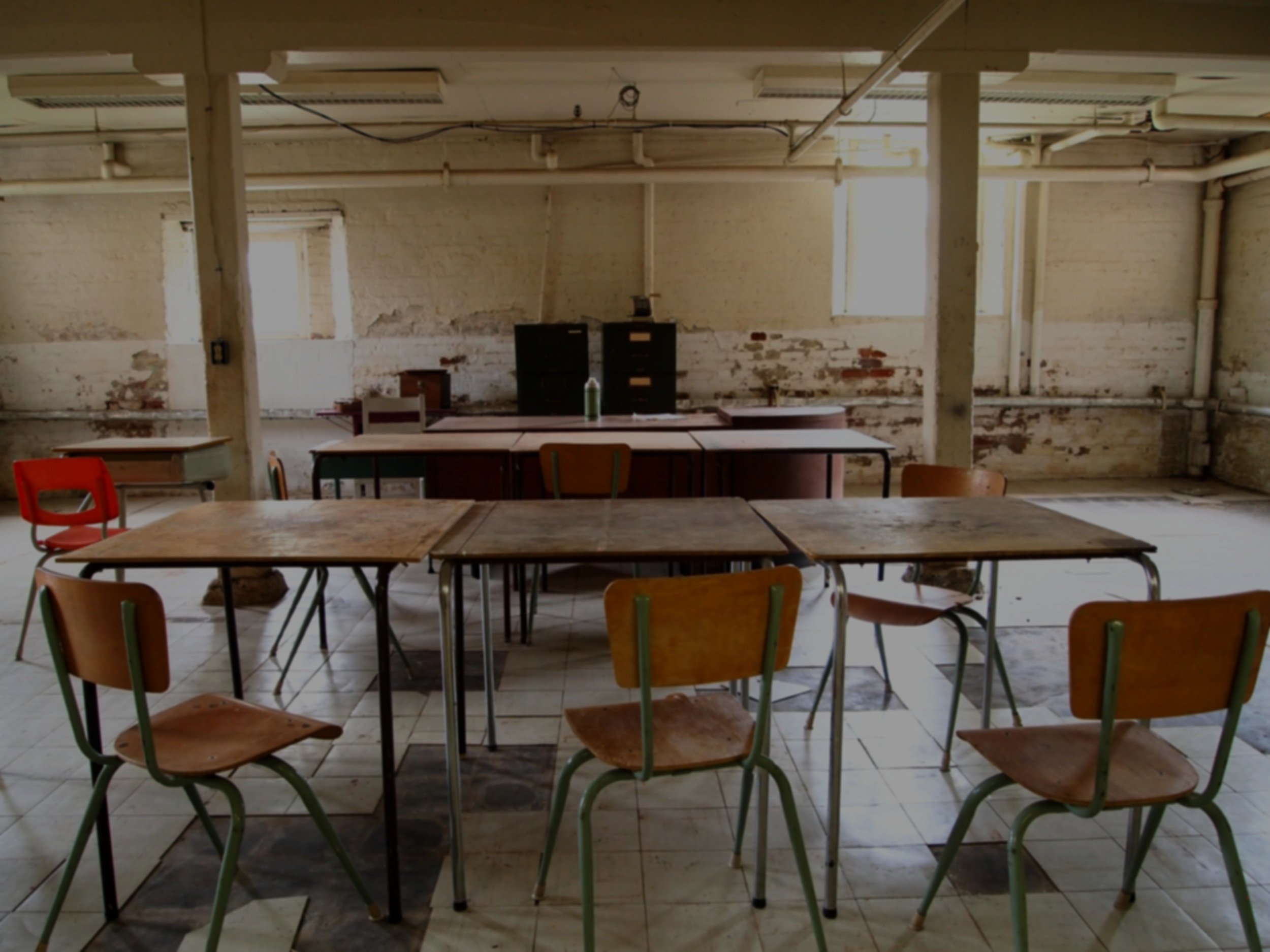
INSTALLATIONS
By-Products of Assimilation
-
In cities across Canada, Indigenous people comprise a disproportionately high percentage of the homeless population. Though the causes stem from a myriad of reasons, a known contributing factor is intergenerational trauma stemming from residential schools and similar displacements like the 60's Scoop and discrimination within Canada's Child Welfare System, which is still ongoing (Caryl 14). It was within this context that I started considering the sleeping bag as an object which is both a luxury commodity used by Canadians to "reconnect with nature"and a necessity for displaced and homeless First Nation peoples; an object that can connect the history and legacies of residential schools to the realities of today.
I begin by deconstructing new sleeping bags, removing their outer shells. The process is meticulous, calculated, and measured. By "skinning" these sleeping bags, I remove their protective cover, exposing the vulnerable material inside to the outside world. I take away their intended function, imposing my will to change what they are. An attempt is then made to reconstruct the baffles and overall structure of the exposed by-product, stitching it back together with cotton twine and beadwork. I attempt to reconcile the damage inflicted through what is left. It is through this process that I explore the concept and reality of reconciliation.
Caryl, Patrick. Aboriginal Homelessness in Canada: A Literature Review. Toronto: Canadian Homelessness Research Press, 2014. Web. 15 06 2016.
http://www.documentcloud.org/documents/1098160-aboriginalliteraturereview.html
-
Aylan Couchie is an Anishinaabe artist from Nipissing First Nation in Northern Ontario. In 2016, she received her BFA from NSCAD University in Halifax, Nova Scotia. She has been accepted as an MFA Candidate at OCAD University where she will be pursuing her graduate studies with a focus on Indigenous monument and public art. She's been the recipient of several awards including "2015 Outstanding Student Achievement in Contemporary Sculpture" through the International Sculpture Center and the Inaugural Barbara Laronde Award from the Native Women in the Arts organization. Aylan has exhibited throughout Ontario, Halifax, New Jersey, Ireland, and Serbia and in 2018 will see her first large scale public art commission raised 70 feet to permanently overlook the City of Barrie, Ontario.
Deception, Reality, and Regeneration
-
Now that there’s acknowledgement, an apology, and small payment given to some survivors who were subjected to the atrocities experienced at residential schools, it’s time to rewrite North American history books and include the true, hidden accounts of colonization and its consequences to its Indigenous populations.
The Mush Hole Project is historic at this time of Truth and Reconciliation, which is long overdue.
My installation is dedicated to my Grandma, Royal Eleanor Greene (nee Hill), who survived her time at Mush Hole and is now an amazing 101 year old elder, so inspiring and representational of some children who were able to overcome and adapt, their spirits, humour, and love of themselves intact. And many raised families of their own, although repercussions from past trauma has seeped into our generations.
But we are able to express ourselves now, speaking out, although mostly in English, yet unafraid, strong, and alive!
-
Kelly Greene, a member of the Six Nations Reserve in Ohsweken, Ontario, is of Mohawk, Oneida and Sicilian descent. Kelly was born in Buffalo, New York and has lived in London, Ontario since 1989. She began her post-secondary education at the University of New Mexico in Albuquerque, where she lived for 20 years, thereafter moving to London and graduating from the University of Western Ontario with a Bachelor of Fine Art Degree.
Greene’s artwork has been exhibited primarily at the Woodland Cultural Centre in Brantford, Ontario in their annual exhibit, "First Nations Art", as well as in galleries and museums in Banff, Alberta; Vancouver, B.C.; Montreal, Quebec; Ottawa, Thunder Bay, Toronto, and London, Ontario; and Santa Fe, New Mexico. Her work is in the permanent collections of the Woodland Cultural Centre, the University of Western Ontario’s Visual Art Department, and numerous private collections in Ontario and the United States. In 2012 and 2015, she was commissioned to complete two permanent outdoor installations for the Woodland Cultural Centre.
Her work focuses primarily on land claims, current environmental conditions, and atrocities towards North America's Indigenous people. She continually tries to understand her Haudenosaunee identity, a culture she wasn't raised in, but began learning after moving to Ontario and immediately meeting Tom Hill, then Museum Director at The Woodland Cultural Centre, whose support influenced her continued investigation and practice, as did numerous teachings from elders, family, and community members.Kelly's Blog: kellygreenesart.blogspot.com
Elindultam (I set out...)
-
As a classically-trained mezzo-soprano I use voice, sound and movement to explore ways of communication, self-expression and delusion. As a refugee and immigrant, I am drawn to clashes of cultures, world-views and vocabularies. As a Canadian I am preoccupied with the delicate dance that connects land to communities, communities to individuals, and individuals to the land. My work runs along the spectrum from traditional classical performances to experimental, multidisciplinary projects and installations. My ongoing training reflects the various aspects of my exploration.
-
Hungarian-born mezzo Margaret Bárdos is based in Southern Ontario and loves touring. At home with classical as well as new, experimental music, she seeks out creative challenges and cherishes working with good hearted people. With a voice described by Opera Canada as "mellow, fruity, that caresses the ears", appearances include interdisciplinary collaborative and site-specific projects that make use of her varied training: from Butoh dance and physical theatre to extended vocal technique and improvisation. She continues as a grateful member of the studio of Tom Schilling. When not on stage, in studio or out recording sounds, she can be found on the back of a horse, or meditating under her favourite clump of trees.
For Good
-
My doctoral research in narrative, loss, and place led me to stories that have been suppressed, but that must and will rise to ears that choose to hear. My work for the Mush Hole Project is, as always, a response to the challenge of my students whenever I have pointed out Human Rights abuses: “So, Madame, what did you do about it?”
-
Mary is an educator and storyteller. Her repertoire includes traditional, historical, literary, and original works. She has performed at Latitudes, the Toronto Storytelling Festival, Sharon Temple, and Feminine Harbor. Mary is a regular teller at the Button Factory in Waterloo, where the Baden Storytellers’ Guild is based.
For This Land II
-
For this Land is a media series inspired by Sioux philosopher Vine Deloria jr.—in particular, his 1998 book from which the title of this project is borrowed. What we find compelling is Deloria’s argument about incommensurability between Western theology and Indigenous spirituality in that the first is rooted in a temporal logic, and the latter in a spatial philosophy. Deloria says, Indigenous world-views are spatial because they privilege a spiritual relationship to ‘place’ and, therefore, tribal spiritual sensibilities emerge from attention given to the landscape and geographical orientation—as the elders say, we write our stories, our histories on the Land.
This project is about place, specifically, three different, interconnected and historically important locations on Six Nations of the Grand River. The first is the Chiefswood estate, the birth place of Mohawk Poet Pauline Johnson and now a national historic site . For several days Mohawk poet Janet Rogers and Mohawk media artist Jackson Twobears explored the heritage site, and creatively engaged with the stories that Pauline left on the land. The second location, the Mohawk Institute Residential School also named the Mush Hole, where the artists engaged with the troubled history and spirit of this site, prepared offerings, and read aloud stories to the now empty rooms and dorms. At the third site, the Secord House in Ohsweken, which is a replica of the Laura Secord House in Queenstown Ontario, the artists performed actions that they imagined conjured the spectral histories surrounding the war of 1812, seeking to engage in a dialogue with this location.
At each site, the actions and interactions were documented and the experiences, and conversations were recorded. New poetry was created and offered as part of the performative engagement. The edition of this project is an installation that will ‘evolve' through the duration of the exhibition, and be an imaginative versioning and an aesthetic interpretation of the dialogues that the artistshad with these “spaces”. The Installation/ performance piece will be a multi-channel sound and video /live cinema performance.
-
Janet is a Mohawk/Tuscarora writer from the Six Nations band in southern Ontario. She was born in Vancouver British Columbia and has been living on the traditional lands of the Coast Salish people (Victoria, British Columbia) since 1994. Janet works in the genres of poetry, spoken word performance poetry, video poetry and recorded poetry with music and script writing. Janet is a radio broadcaster, documentary producer and sound artist.
Her literary titles include; Splitting the Heart, Ekstasis Editions 2007, Red Erotic, Ojistah Publishing 2010,Unearthed, Leaf Press 2011 and “Peace in Duress” Talonbooks 2014. Janet 5th collection of poems will be released in November 2016 with ARP Books titled Totem Poles and Railroads. You can hear Janet on the radio hosting Native Waves Radio on CFUV fm. Her radio documentaries “Bring Your Drum” (50 years of indigenous protest music) and Resonating Reconciliation won Best Radio at the imagaineNATIVE Film and Media festival 2011 and 2013.
Janet Rogers and Ahkwesase Mohawk poet
Alex Jacobs
make up the poetry collective
Ikkwenyes
which produced the poetry CD Got Your Back and won the Loft Literary Fellowship prize 2014.
2Ro Media Inc
is the production company she and Mohawk media artist
Jackson Twobears
own and operate. They are producing
NDNs on the Airwaves
an experimental documentary about CKRZ fm Six Nations radio. Janet produced and launched a 6-part radio documentary series titled
NDNs on
the Airwaves
focused on the current history of native radio in Canada, in February 2016.
-
jackson 2bears is a kanien’kehaka (mohawk) multimedia installation/ performance artist and cultural theorist from six nations who is currently based in lethbridge alberta, canada. since 1999, 2bears has exhibited his work extensively across canada in public galleries, museums and artist-run centres, as well as internationally in festivals and group exhibitions.
Some recent exhibitions include: Musée d'art Contemporain de Montréal; Urban Shaman (Winnipeg, MB); Bbeyond (Belfast, Ireland); SAW Gallery (Ottawa, ON); A Space (Toronto, ON); the Vancouver New Music Festival (Vancouver, BC.); Vancouver Art Gallery (Vancouver, BC.); Art Gallery of Greater Victoria (Victoria, BC.); EM Media (Calgary, AB.); the Banff Centre (Banff, AB.); Redshift Gallery (Saskatoon, SK.); Digital Art Weeks (Zurich, Switzerland); North American Indigenous Games (Cowichan, BC); and the Futur-en-Seine Festival (Paris, France).
2bears is currently a member of Beat Nation [Live]—a First Nations artist collective that combines hip hop, live music and digital technology as a way to celebrate the spirit of contemporary Indigenous culture. He is also a co-founding member of Noxious Sector—a communal forum dedicated to the exploration of interdisciplinary artistic practice and creative expression. 2bears is presently co-director of 2Ro Media Inc. with Mohawk poet, performance artist and producer Janet Rogers—their short documentary, NDN’s on the Airwaves, is currently in production and expected to air on APTN in 2017.
2bears is an active researcher in the areas of video arts, digital media, and extended media, with a focus on embodied interaction and live audio/visual (Live Cinema) performance. His recent works focus on how the changing impacts of technology have a profound effect on contemporary politics, culture and society, in particular with regard to First Nations communities. Recently published scholarly essays can be found in peer-reviewed journals such as C-Theory and the Leonardo Electronic Almanac (LEA), as well as in the text Coded Territories: Tracing Indigenous Pathways in New Media Art published by the University of Calgary Press (2014).
2bears holds a BA. in Art & Art History from the University of Toronto, as well as a Diploma in Fine Arts from Sheridan College, Oakville. He received his MFA from the University of Victoria during which time he produced digital media installation and performance artworks that variously explored themes of Indigenous heritage, resistance, and cultural renewal. His thesis exhibition was a telematic/ interactive installation and performance that explored such themes as distributed reality and technological immersion in relation to transformations in First Nations identity and culture.
In 2012 2bears completed his PhD in Interdisciplinary Studies at the University of Victoria, Victoria BC. where he studied with esteemed professors Arthur Kroker, Taiaiake Alfred, Steve Gibson and Andrew Schloss. His Doctoral work takes a cross-cultural and multi-disciplinary approach to questions of contemporary Indigenous identity, technology and interactive/performance art. His dissertation, entitled Mythologies of an [Un]dead Indian, explores the aesthetics of contemporary Indigenous identity—its various manifestations, transformations, simulations and hybridizations—within the context of our hyper-mediated, technologically saturated culture.
2bears recently completed two terms as Audain Professor of Contemporary Art of the Pacific Northwest at the University of Victoria, and is currently Assistant Professor of Studio Art and Native American Studio Art at the University of Lethbridge, AB.
Ohen:ton Karihwatehkwen
-
For 138 years this school has robbed us of our languages, for nearly another 50 years we are recovering from this loss. I am Mohawk, and like the majority of Mohawks in my community we cannot speak it. My great grandmother attended this place in 1918 she was fluent in both Mohawk and Cayuga. With the exception a few phrases, these languages stopped with her. This piece Ohen:ton Karihwatehkwen (The Thanksgiving Address) is about that loss.
From September 14 - September 18, 216 - On the lengthy drive way leading up to the Mohawk Institute participants will be asked to write in chalk and in an English alphabet the words of the Thanksgiving Address. This address is a call to the people to gather, to bring their minds together, to be thankful, and acknowledge the many blessings this life offers us.
I wish to thank Joslyn Jamieson for lending her beautiful voice for the audio component of this piece, and for being an understanding ear with my many questions. With much appreciation, Nya:weh.
-
Naomi Johnson is Mohawk, Bear clan from Six Nations. Naomi has had several years’ experience within the arts as a visual artist, community artist, and curator. Naomi has a BFA honours – Visual Arts - from York University and a diploma in Cultural Resource Management from the University of Victoria. In 2013 she was hired as the Woodland Cultural Centre’s first Artistic Director. During this time she has curated several art exhibitions including the group
exhibitionOrigins
(2013) and the solo show
Kent Monkman
(2014). Other notable programs include the
Tehonkieron:nions
(They are Entertaining) performing arts series. Naomi gathered notable experience as a community artist serving as Lead Artist Facilitator for Arts Access, a three year community arts initiative lead by the AGO. Naomi continued her work as a community artist by serving as Artist in Residence for the Ontario Federation of Indian Friendship Centres - YMAQ (Youth Media Art Quilt) project. Prior to her hiring as Artistic Director- Naomi worked at the Woodland Cultural Centre as Artistic Associate assisting in the programming and implementation of Planet IndigenUS 2012.
Omushkegowak (people of the land)
-
When I consider the legacy of these schools, rooted in colonization which sought to steal and exploit the land, I confront the horror of the forcible removal of children. I confront a people taken from their communities and their ancestral lands.
Many tactics were used to remove, assimilate, and destroy our people. These included: starvation, disease, sterilization, and the creation of reservations via the Indian Act. It was designed to forbid us from gathering, dancing, and performing our ceremonies. It was designed to control, displace, and destroy our communities.
This piece is about a longing for home and for our lands. Indigenous people yearn to recover what was taken in these schools. We crave a place that is sacred. The image offers both a sense of removal, but also of returning. By bringing the land here, I am seeking to heal the violence imposed over many generations. We are taking back our ways, as their importance never left our spirit, even when broken and abused for a time. Our people must rediscover who we really are as Indigenous people. We must take back our identity and return to our ways. We must reconnect to our first family, which includes the earth, water, plants, and animals. This is the basis of our traditions, knowledge, and spiritual ways, which bind us with creation.
This photographic image, digitally printed on linen, is the continuation of a body of work entitled, Mending Ancestral Lands. Featured here is the image repeated seven times, representing future generations to come, but also the generations that have past. The repeated photographic image is of the James Bay Lowlands. It is an iconic landscape comprised of black spruce trees growing in the Muskeg.
In the research about the history of this Mohawk residential school, known as the Mush Hole, I have learned many of the children sent here came from James Bay communities. Omushkego and Eeyou Istchee Territory (West and East James Bay) is where my family is from. My late grandmother, Margaret (Wesley) Iserhoff, was forced to attend the Pelican Falls residential school near Sioux Lookout, Ontario. She was sent a long way from home.
Imagine being forced to attend a school, foreign in every way. The children yearned for their family and for their communities. The children yearned for their homes, their traditions, their culture, and their lands.
-
Erika A. Iserhoff is a woman of Omushkego and Eeyou Cree heritage and a member of Constance Lake First Nation. Erika is a multi-disciplinary artist, arts producer, administrator & fundraiser, along with being a researcher of indigenous culture. She works in a variety of mediums, seeking to bridge her cultural knowledge with contemporary art and design, with a focus on the reclamation of traditional materials, processes, and their cultural significance.
Erika is the co-founder and co-Artistic Director of the Setsuné Indigenous Fashion Incubator, and is the current Artistic Producer for Native Women in the Arts and a member of the Chocolate Woman Collective. She's worked as a costume designer for film and theatre for the past 15 years and is the recipient of a Dora Mavor Moore award for Outstanding Costume Design for the play Agokwe by Waawaate Fobister (Buddies in Bad Times Theatre). She holds a bachelor of design with a major in textiles from OCAD University.
Professional Art Exhibitions include; Indian Giver (co-curator/artist Setsuné Indigenous Fashion Incubator), Passages: First Peoples (OCADU University Professional Gallery), Ancestral Teachings Contemporary Perspectives curated by Vanessa Dion Fletcher (Thunderbird Centre, Gladstone Hotel Gallery).Not Forgetting curated by Lisa Myers (Harbourfront Centre, Planet IndigenUS), Catalyst (Arts Etobicoke), Hand Work Graduate Exhibit (John B. Aird Gallery).
Some Costume Design credits include; The Scrubbing Project & The Only Good Indian by the Turtle Gals Performance Ensemble (Native Earth Performing Arts). Agua by Earth in Motion (Planet IndigenUS). The Rez Sisters by Tomson Highway (O'Kaadeniga Wiingashk & Public Energy Peterborough). Stolen by Jane Harrison, Wiora by Hone Kouka, Jumping Mouse by Columpa Bobb & Marion deVries (Centre for Indigenous Theatre). As well as, Chocolate Women Dreams the Milkyway by Monique Mojica (Chocolate Woman Collective), and Free As Injuns by Tara Beagan (Native Earth Performing Arts), Nóhkum by Michael Greyeyes (Signal Theatre), Charnie Wenjack & Naskumituwin (Treaty) by Joseph Boyden (Heritage Minutes Historica Canada).
Out of Tune
-
As a primary piano teacher, I have encountered many pedagogical repertoire books with a broad range of pieces and approaches, some inspiring, some disarming. I am dismayed by a particularly pervasive trend of an “Indian drum” piece, with a pounding left hand and brutish lyrics, often accompanied by a crude cartoon. When I first encountered a piece like this, I wanted to brush it off as something from the past, a relic from an ignorant time, but it is not. Many of these books are still being used as teaching materials now. Many were published within the last 20 years. You can easily find copies of
Boom Boom Indian Drum
online and see little children playing this piece in youtube videos. These pieces are a colonial concoction that by no means reflect the rich music of this continent's many varied Indigenous communities, yet they remain a fixture in the canon of piano pedagogy with a sad label of “Indian Song”. We need to eliminate these offensive works from future publication and the teaching canon, and move towards respect for true Indigenous music.
-
Meghan Bunce is a collaborative musician and private music teacher in the Waterloo Region. She is a graduate of Laurier’s Faculty of Music, where she studied voice with Kimberly Barber and composition with Glenn Buhr. She has created music for the Multicultural Theatre Space, Lost and Found and The Studio Players, and she enjoys an ongoing relationship with the University of Waterloo Department of Drama and Speech Communication. She was the recipient of the Boston Metro Opera Festival Award, and KW Arts Awards’ Leading Edge Award.
Remnants
-
In my artistic, activist and scholarly endeavors, I attempt to articulate a contemporary Indigenous presence across disciplines blending traditional Haudenosaunee skills, symbols, forms and language with modern forms of making to reclaim space, to reclaim memory, in the face of settler-colonial occupation and forced forgetting. Remnants represents the telling of tales too often silenced, that of children’s experiences in residential schools and the intergenerational effects into today, through the imagined artifacts of that which was destroyed–clothing children would have worn in their time in places such as the Mush Hole. These settler costumes, these weapons of assimilation that stripped them of their individuality, of their culture, of their nationhood, of their lives were deliberately destroyed as evidence leaving us only to imagine these artifacts, to remember these stories.
-
Multidisciplinary Kanien'kehá:ka mother, artist, craftswoman, scholar-activist, and dancer Jodi Lynn Maracle is currently pursuing her PhD at the University of Buffalo (SUNY) in Buffalo, NY centering her research on Haudenosaunee midwifery, birth work, dance, language and sovereignty. She most recently completed textile based works for group show
Indian Giver: Truth Tellings and Narratives of Representation
with Setsuné in Toronto, ON. Of her accomplishments, she is most proud of her ongoing work to become a fluent second language Kanien'kéha (Mohawk) speaker and to hear these original sounds come from her toddler son's mouth.
Run
-
The journey toward “Reconciliation” has scarcely begun. Current survivors speak their horrors, shoehorned into a system of testifying and tallying created by the same government that worked with churches to oppress them as young people. While educating ourselves about Indian Residential Schools (IRS), it becomes ever more evident how much our adult lives are defined by our time on earth as children. There are memories from which we as Indigenous artists can draw parallels, memories of physical and mental abuse at Catholic Schools we attended, or the window of insight opened when an IRS survivor parent reluctantly or randomly reveals facts about her school experience. We find small experiential references to try to understand the innumerable atrocities, and our empathy deepens. An aspect that screams beyond the boundary of comprehension is the willful and or accidental death of a young person while wards of these institutions. How can we ever reconcile such a loss? How do we recover from the profound tragedy of children taken when their murders are not documented and therefore not acknowledged? How can we move through these spaces without buckling under that pain?
Time and children are vulnerable, subject to circumstance and in need of our minding. Neither can be replaced if taken, and the potential lost in that thievery is unknowable. This work is dedicated to those who did not emerge alive, yet bravely embodied the fighting spirit that has lived on.
RUN Project Credits:
The actor in the video is Owen Louis Soop (Kainai/Nlka’pamux/Irish.) Wardrobe, hair, make-up, costume and props apprentice was Diana Marie Soop (Kainai/Nlka’pamux/Irish.) Diana and Owen are the grandchildren of two IRS survivors, one paternal (St. Mary’s in Alberta) and one maternal (Kamloops IRS in B.C.)
Thanks to mighty mama Rebecca Beagan for letting us hire your kids for the project, and to Pauline Beagan for her courage in sharing stories.
Thanks to Bronwyn Pel, Banff Centre wardrobe intern, for helping us find boots and facilitating the loan of them.
-
Tara writes, directs, produces and acts in theatre. She grew up in a story loving home. Her Ntlaka’pamux mom has always been an avid reader, and her Irish-Canadian dad took her to the library weekly. Her older sister Rebecca (now a teacher) taught her the alphabet after learning it in kindergarten, and her younger brother Patrick (lighting designer/theatre administrator) created worlds and characters with her, sharing an interest in enacting stories. She is a proud auntie to Diana and Owen. Tara is now happy in work with her love, Andy Moro, co-helming Indigenous Arts Activist Company ARTICLE 11
More work credits can be found at
-
Andy
Moro
is a multi-award winning Euro/Omushkego Cree designer based in Toronto. Andy co-creates and “designaturges” with companies across Turtle Island, including works in progress with Kaha:wi Dance Theatre in Toronto, Red Sky Performance at the Banff Centre, and the Gitxsan Dancers of Damelahamid in Vancouver. Moro has also been core creative faculty for the Indigenous Dance Residency at Banff since 2012 where he has co-created with Taane Mete, Neil Iremia, Jock Soto, Lina Cruz and more. Andy has twice been named among the Top Ten Theatre Artists in Toronto’s NOW magazine.
-
ARTICLE 11 is helmed by Andy Moro and Tara Beagan. Founded in 2013, ARTICLE 11 channels Moro and Beagan’s mutual desire to pursue the creation of live performance works with a holistic approach and a rigorous attack. The company is named for the 11th Article of the United Nations Declaration on the Rights of Indigenous Peoples.
“Indigenous peoples have the right to practise and revitalize their cultural traditions and customs. This includes the right to maintain, protect and develop the past, present and future manifestations of their cultures, such as archaeological and historical sites, artifacts, designs, ceremonies, technologies and visual and performing arts and literature”
ARTICLE 11’s performative installation DECLARATION has been featured at the National Arts Centre and the Royal Ontario Museum and will be presented in Calgary at One Yellow Rabbit’s High Performance Rodeo and MT Space’s IMPACT in 2017. In Spirit, a theatrical work told from the perspective of a missing girl, has partnered with the U of Regina, GTNT, Ryerson U, Queen’s U, and will partner with Urban Indigenous Theatre in Winnipeg in 2017.
In April 2016, ARTICLE 11 premiered Reckoning - an inter-disciplinary triptych tackling layers of fallout from the Truth and Reconciliation Commission. Karen Fricker wrote: “Its excellence sets the bar high… Reckoning demonstrates the unique work that live performance can do in bringing people together to share experience, raise awareness, and consider where each of us stands in the still-unfolding story of Canada’s relationship to its [sic] First Peoples.” Toronto Star, April 17, 2016. Reckoning will run in Edmonton in October 2017, with more tour dates to follow.
Sewatonhna ren - May Your Spirit be Well
-
This performance acknowledges the lives of Mohawk Institute students by symbolically offering past students what they did not receive: love, caring, tenderness, nourishment, cultural knowledge and language. It is a response to the residential school experience, an embodied way to feed the hunger of their spirits and to say: “kwè:iahre - we remember you, kwanorónhkhwa - we love you and tenkwáhsnie - we will care for you”. Audiences will be active in generating an individual response to the bricks and mortar of the Mohawk Institute and its tangible history of assimilation and cultural genocide.
-
Kahnyen’kehàka (Mohawk) Nation, Turtle Clan, Tekaronhiáhkhwa Santee Smith is a pottery designer, performer, choreographer, artistic director and producer from Six Nations of the Grand River territory. At the young age of 2 years old, Santee was creating her own dances and after an injury that left her with two broken legs, she went on to complete 6 years of formal dance training at Canada’s National Ballet School. After leaving the National Ballet School Santee went onto post-secondary education completing Physical Education and Psychology degrees from McMaster University and then received her Master of Arts in Dance from York University. It was while she was working on her Masters that she completed her first major choreographic work entitled Kaha:wi based on her family creation story. In 2005, Santee Smith founded Kaha:wi Dance Theatre (KDT) which she would grow into an internationally renowned company sharing Indigenous artistic voice globally. Her body of work includes 12 full productions and over 9 short performance works. Santee has received many nominations and awards for her artistry, some of which include: Ontario Arts Council’s K.M. Hunter Award for Dance, Canada Council for the Art’s Victor Martyn Lynch-Staunton Award for most outstanding mid-career artists in dance, John Hobday Award for outstanding achievement in arts management, Hamilton Music Award for Kaha:wi the soundtrack, and a Dora Mavor Moore Award for Outstanding Choreography in the Dance for
Susuriwka
–
willow bridge
Side Show Freaks & Circus Injuns
-
Co-Written by Monique Mojica and LeAnne Howe
Featuring Izzie the Invisible Woman
Dramaturged & Outside Eye: Tara Beagan
Video Design: Andy Moro
-
These are two excerpts from the work-in-progress. "Geronimo at the 1904 St. Louis World's Fair" and "High Tea in the Nuthouse". They were created by Monique Mojica and explore the themes of incarceration and invisibility.
As a Prisoner of War, Geronimo, under a special dispensation by President Theodore Roosevelt, was brought in shackles to be a displayed at the 1904 World's Fair. He was placed directly across from the model classroom transplanted from the Carlisle Indian School where fair goers could observe "civilized" Indians vs the "savagery" of Geronimo.
Izzie (a fictional character) is incarcerated in the Hiawatha Asylum for Insane Indians in Canton, South Dakota — an actual historical place. Many Indigenous people — men, women and children — deemed "trouble makers" for resisting assimilation and acculturation were removed from their homelands and incarcerated there. Izzie is a Rappahannock root worker and midwife from the Powhatan Confederacy in the Tidewater region of what is now called Virginia. As a model patient she serves high tea and learns to become invisible. It is 1904.
The insane asylums, prisons and residential schools of the era were planned by the same architects. Built for a common purpose. That is why they all look alike. Izzie wanders the halls and grounds of the Mush Hole the way she did at the Hiawatha Asylum for Insane Indians. She is "disappearing" herself as she learns to become invisible. -
Monique Mojica (Guna and Rappahannock nations) Actor/ playwright Monique Mojica is passionately dedicated to a theatrical practice as an act of healing, of reclaiming historical/ cultural memory and of resistance. Spun directly from the family-web of New York’s Spiderwoman Theater, her theatrical practice embraces not only her artistic lineage through mining stories embeded in the body, but also the connection to stories coming through land and place.
Monique’s first play Princess Pocahontas and the Blue Spots was produced in 1990 and is widely taught in curricula internationally. She was a co-founder of Turtle Gals Performance Ensemble with whom she created The Scrubbing Project, the Dora nominated The Triple Truth and The Only Good Indian. In 2007, she founded Chocolate Woman Collective to develop the play Chocolate Woman Dreams the Milky Way, a performance created by devising a dramaturgy specific to Guna cultural aesthetics, story narrative and literary structure.
Monique has taught Indigenous Theatre in theory, process and practice at the University of Illinois, the Institute of American Indian Arts, McMaster University and is a former co- director of the Centre for Indigenous Theatre. She has lectured on embodied research and taught embodied performance workshops throughout Canada, the U.S., Latin America and Europe.
She was most recently seen onstage in Kaha:wii Dance Theatre’s world premiere of Re-Quickening choreographed by Santee Smith and with the National Arts Centre Orchestra in I lost my Talk as part of the Life Relfected series.
Upcoming projects include Side Show Freaks & Circus Injuns co-written with Choctaw playright, Leanne Howe and directed by Jorge Luis Morejón with an illustrious collaborative team of Indigenous artists from diverse disciplines.
Story Time
-
Story Time began as an exploration into the artists’ relationship with intergenerational trauma which began in late 2012 during Lacie’s first year studies at Emily Carr. The installation features an audio recording from CBC where residential school survivor Irene Favel speaks of her experience in a Saskatchewan school. The imagery of the nun is used to invoke the artists' experience of having been told stories from Residential school survivors and the feeling that accompanied them. This iteration of the installation was prepared and expanded specifically for the Mush Hole Project and considers resurgence and resistance of culture in the face of these genocidal acts.
Story Time was shown in NE:ETH: Going Out of the Darkness which was shown in conjunction with the Truth and Reconciliation Commission during late 2013. The work was shown along the likes of Lawrence Yuxwuluptun Paul and Adrian Stimson and has also received acclaim in Canadian Art Magazine for its participation in NE:ETH.
-
Lacie Kanerahtahsóhon Burning is a Kanien'kehá:ka and Onöñda'gega (Mohawk & Onondaga) multi-disciplinary artist who was raised on Six Nations and is currently working out of Vancouver British Columbia which is situated on Unceded Coast Salish territory. In this multi-disciplinary approach, photography, video, painting and sculpture are used often in cohesion with one another to create works that focus on indigenous politics and of identity. They are currently studying at Emily Carr University of Art + Design in the Visual Fine Arts program and is traveling with grant by the school. Lacie is also currently the summer Project Coordinator of Vancouver Indigenous Media Arts Festival.
Sub-Merge
-
Direction and Dramaturgy
Andy Houston
Performance and Dramaturgy
Andrew Martin and Brooke Barnes
-
To come closer to one’s own buried past, one must
act like an excavator. Above all, one mustn’t be afraid
of coming back to the same point time and time again
– to spread it like one spreads the earth, to churn it
like one churns the soil.
— Walter Benjamin, Excavating and Remembering
We are in the former Mohawk Institute residential school, in the basement, in the boy’s shower room. This space, where children were naked and vulnerable for the purpose of simple cleansing, is a site of notorious abuse. So what happens when we submerge ourselves in this space and this history? How do we feel or hear the echo of the acts that took place here?
In this performance we represent a relationship between a Mohawk young man and his non-indigenous friend: she is a newcomer to this site and its legacy; he is haunted by its intergenerational trauma. There are few words for what he wants to convey to her; a part of him is trapped in this room.
Our performance explores how liberation and healing might happen through a mutual submersion in the troubled experiences of past and present. We are excavating emotional, political, and cultural strata here so that we may have a shared understanding of how this strata forms our world, and how we can all be part of stirring up the sedimentation of this strata, in the pursuit of knowledge, healing, and a new relationship to this past.
-
Brooke Barnes is an artist-researcher of site-specific and intermedia creations with a background in dramaturgy, directing, performing/devising, and digital media creation/management. In 2019, Brooke completed her B.A. in Theatre and Performance at the University of Waterloo. At the start of the COVID-19 pandemic, Brooke ventured into Seneca College’s Social Media graduate certificate program to explore ways to incorporate marketing on digital platforms for theatre companies during a time where social distancing was top of mind. In 2020, Brooke spearheaded the digital materialization and co-creation of WOOMcollaborative a multidisciplinary arts incubator for research and development in Kitchener-Waterloo providing space, subsidy, and mentorship to up-and-coming performance creators with innovative artistic ideas.
-
Andrew Martin is a young Mohawk actor, born and raised on the Six Nations of the Grand River Territory in Ontario, Canada.
Andrew started acting on stage at the age of sixteen, in high school productions, and started taking vocal and violin lessons outside of school. He would eventually go on to be cast in Dominion Repertory Theatre's original production of The Lion and the Eagle as part of the War of 1812 Bicentennial events in January, 2012.
In 2011, he began appearing in front of the camera in history documentaries such as
The War of 1812
(PBS, WNED), and
Curse of the Axe
(History Channel), as well as rebooted
Canadian Heritage Minutes. Andrew would land his first on camera speaking role in the 2014 feature film, Fire Song in the lead role as 'Shane'.
Fire Song went on to have it's world premiere at the 40th Toronto International Film Festival.
Taker
-
My works deal with examination of dark realities that are rarely spoken. Memories and thoughts are never clear and my paintings reflect the layers that hide or protect our past, the things we cherish and the things we'd love to forget. Quite often in life, things that are out of our control have such impact on our lives, not physically really but emotionally, things that we will carry with us forever. The good and the bad both weigh us down and fill us up, to the point that there's no room left. Then one day, something happens that forces you to shift things, reposition and prioritize the weight to a more manageable point for the time being.
I paint on mahogany plywood and use a mix media approach. Resist techniques are used with the paint application. Gouging and scratching is done with various hand tools, shovels and hoes are used to scrape the work and expose the earlier layers to create a sense of time. Images are applied to the work by using a very primitive printing technique and manipulating the cut after various applications.
The creation of a piece is a very physical activity. I get lost in the painting and struggle between layers, caught in a dilemma of exposure and protection. It's an exhausting process and yet I find it so satisfying.
It was about 2 a.m. when I got the call that Gramma B wasn’t going to make it through the night and I should come to the hospital to say goodbye. When I walked into her room and stood beside her bed, she began speaking to me in a language I’d never heard before. I couldn’t understand a word she said, she was speaking through tears. When I left her room, the emptiness I felt was unimaginable.
Gramma B survived the Mush Hole. She never spoke about her experience. I heard she was punished for speaking her language.
The sculpture is called “taker.” The message across the face is written in Mohawk, it means “ I love you Gramma.”
-
Michael has more than 20 years of graphic design, planning, and fabrication experience across a range of industries including tourism, advertising, small business, agriculture, professional and social services, and arts and culture. He works in several media, developing designs and applications for print, web, signs, garments, promotional materials, and more.
A graduate of George Brown College, Michael is also an award winning mixed media painter and sculptor who has shown work across Ontario and the United States, including the Hummingbird Centre in Toronto and the Agora Gallery in New York.
Turning Tables (birch wood work in progress)
-
On January 28, 1879, Nicholas Flood Davin was directed by Prime Minister John A. Macdonald to venture to Washington, D.C with a mission to become “acquainted with the establishment, cost and practical value of industrial schools among the Indian population in the United States” (Davin 1). In March, of that same year, Davin submitted his 13 recommendations to Macdonald in the “confidential” document titled the Report on Industrial Schools for Indians and Half-Breeds. The Davin Report, as it is called, became the template for the residential school system in Canada.
The Davin Report, as a ligature in the colonial apparatus, connected the discourses of “aggressive civilization” and “educational direction” (Davin 1) and was installed as a means to assimilate Indigenous youth and children into the Euro-Canadian state which removed them from their land, communities, homes, and kin as it dismantled the ties to their cultures, languages, rituals, and names. This policy was enacted with consultation from neither Indigenous communities nor individuals who would carry its catastrophic and intergenerational consequences. The Davin Report is a legislative blueprint for the architectural foundation of the residential school system. In this work it will be confronted.
As an interdisciplinary communication scholar my method engages with research > practice. How then can this report be challenged? How can those who survived it speak back to its brutal ramifications? What would their recommendations be if they were at the table? Can these forms of government policies ever begin to be reconciled? Where does truth reside? What is my responsibility? For my contribution to the Mush Hole Project, I intend to make space for individuals who survived residential schools and for intergenerational survivors to be "at the table" and respond to not only the archival report, but also its manifestation in the Truth and Reconciliation Committee’s Final Report. The table located in the former residential school’s boardroom is set up to replicate a meeting. The boardroom meeting table, at which decisions unfold, serves to mirror the ones Indigenous peoples were denied access to when creating, in this instance, the nineteenth-century residential school policies. Adjacent to the table, two 30” x 40" birch wood panels are hung. I will ask individuals who are non-Indigenous to move away from the table. I will then invite individuals from First Nations communities to participate in the Mush Hole Project. The affect of this exclusion to participants who are non-Indigenous is intended to be uncomfortable but critical in communicating meaning by renouncing expectations of privilege in order to polarize the work’s objective: acknowledgement and presenting a request for knowledge. Enduring the consequences of government polices, how do First Nations people imagine concepts such as “truth” and “reconciliation”? What does this language look like? Two birch wood panels, side by side, will be offered with paint and brushes for audience members from Indigenous communities to convey the the layered and complex meanings of truth and reconciliation.
The boardroom, boardroom table, birch wood, and a formal request for knowledge promises a location for an intervention that subverts the nineteenth-century colonial agenda and the ongoing erasure of agency embedded in government legislation and colonizing fallacies of “civilization” and “education.” Birch wood is a symbol of truth.
“I wanted to see those decision-making boardroom spaces shifted and transformed, in a sense, and have First Nations people, Six Nations, intergenerational survivors of residential schools present and acknowledged,” says Moll. “What are their recommendations? They weren’t consulted when this was created.”
-
Sorouja Moll has a PhD in Humanities (Concordia) specializing in the fields of Communication, English, and Art History. She holds a BA and MA in English (Guelph). Moll’s interdisciplinary research interests include the critical discourse analysis of sovereignty, nation, and memory in private, popular, and alternative media. Moll is working on her two SSHRC funded projects including
Oral Histories of Mixed Race Women
and the
Integrating Knowledges Summit. She is a collaborator on the site-specific installation the Mush Hole Project. Her manuscript, All the Rage: The Trial of Louis Riel and Nineteenth-Century Media, is under contract with UBC Press. Moll teaches in the Department of Drama and Speech Communication at the University of Waterloo.
We Don't Speak Ojibway, But We Have Mattresses
-
This installation deals with the legacy of the Residential School era, the intergenerational effects of trauma, the loss of languages and culture, and the inability for apologies or compensation to adequately bring about healing or restoration. What is left after compensation and apologies have been made?
-
Nathan Adler is a writer and artist, who works in many different mediums, including audio, video, drawing and painting, as well as glass. His novel "Wrist" an Indigenous monster story, and is published by Kegedonce Press (July 2016). He has a short story in "The playground of Lost Toys," (Exile Dec. 2015), and a forthcoming story, "Tyner's Creek" in an anthology of, "Canadian Creatures, Monsters and Myth" (Exile 2016). He is a member of Lac Des Mille Lacs First Nation.
Who Will Be My Witness?
-
This performance and installation piece is meant to engage with the audience and promote healing within the community of survivors and their descendants. The audience will be invited to write on the wall of the Residential school and show positivity toward those affected by the Residential school system and its history.
-
Lacie Kanerahtahsóhon Burning is a Kanien'kehá:ka and Onöñda'gega (Mohawk & Onondaga) multi-disciplinary artist who was raised on Six Nations and is currently working out of Vancouver British Columbia which is situated on Unceded Coast Salish territory. In this multi-disciplinary approach, photography, video, painting and sculpture are used often in cohesion with one another to create works that focus on indigenous politics and of identity. They are currently studying at Emily Carr University of Art + Design in the Visual Fine Arts program and is traveling with grant by the school. Lacie is also currently the summer Project Coordinator of Vancouver Indigenous Media Arts Festival.

Programming
-
Site Specific Art and Performance Installations
September 16th, 2016
Opening Ceremony @ 6:00pm
Tour @ 7:00pm
---------------------------------------------
September 17th, 2016
Tour 1 Registration @ 12:00pm
Tour 2 Registration @ 3:00pm
Tour 3 Registration @ 6:00pm
---------------------------------------------
September 18th, 2016
Final Tour Registration @ 12:00pm
Closing Ceremony @ 3:00pm
-
Tour duration is 2 hours (3 w/ Opening or Closing Ceremony).
A maximum of 100 people per tour.
Transportation from the University of Waterloo & Art Gallery of Guelph is free.
For more info, see the Registration page for details
Truth and Reconciliation Response Projects
How are the University of Waterloo, the Waterloo Aboriginal Education Centre and other communities addressing the Truth and Reconciliation Commission’s 94 Calls to Action?
The Truth and Reconciliation Response Project website is a hub for projects and initiatives by members of the University and partners that respond to the Calls to Action for reconciliation amongst Indigenous peoples and all Canadians.
|
-
Save The Evidence Campaign
The Mohawk Institute Indian Residential School building at the Woodland Cultural Centre has been providing in-depth and historically significant insight into the Residential School System for the past 44 years. The Mohawk Institute is one of less than 10 residential schools still standing across Canada. With close to 10,000 visitors every year, tours and programs offer a distinctive look into First Nations and Canadian history. The Mush Hole Project aims to raise awareness and encourage support for the
, to ensure that the physical evidence of this dark chapter in Canadian history is never forgotten.
-
Youth Workshop Programming Schedule
Objective
Six Nations Elected Chief Counsel Ava Hill reminds us of the importance for mainstream Canada to understand the history of residential schools and the implications: “They need to understand what happened to our people by the government of the day. It is to blame for many of the social problems still being experienced today” (Ruby, 2014). Before we approach the complex meanings embedded in the language of “reconciliation” and “truth,” we must first address the societal challenges that emerged from the residential school system and the impact to educational paradigms and youth. The objective of the Mush Hole Project & Integrating Knowledges Youth Workshop is to create and encourage opportunities for Indigenous and non-Indigenous youth to meet and to share their lived experiences by opening channels of communication, facilitating intercultural spaces of learning, and acknowledge different historical contexts and knowledges in order to develop and sustain deeper understanding and relationships.
Workshop Summary
Students from Six Nations Polytechnic and Assumption College students in Brantford with facilitators from both communities will be the working group to experience, as participants, the Mush Hole Project site-specific installation. The students’ involvement promises to begin their conversation, acknowledge historical contexts, address contemporary challenges, and surface questions about the meaning of “truth” and “reconciliation” experienced by each individual student. After the attending the Mush Hole Project, the 12 students (6 from Six Nations of the Grand and 6 from Assumption College) will meet to discuss and share their experiences. They will be encouraged to produce creative articulations together or as individuals. The students will then convene as delegates at a pre-Summit orientation (Thursday, October 13, 2016). They will be joined by up to 40 students from the Waterloo Region School Board to share and continue the workshop process in planned activities (see schedule). The following day, they will attend and participate in the Summit events (Friday, October 14, 2016) and will communicate the workshop process at a Circle discussion and be involved with a seminar session. Detailed programming follows. Parents, guardians, relatives, relations and teachers of students are encouraged to attend the Mush Hole Project and Integrating Knowledges events with the students.
Funding for the Mush Hole Project & Integrating Knowledges Youth Workshop
is provided by
Ontario Arts Council,
University of Waterloo – Bob Harding Humanities and Social Sciences Award,
SSHRC Connection grant,
and our many collaborative organizations and individuals.Visit the Truth and Reconciliation Response Project website for the list of our collaborators, events and project information
Laureen( Blu) Waters; Istchii Nikamoon- Earth Song
Cree/Métis / Micmac-Wolf Clan, member of the Metis Nation of Ontario
-
Blu's family is from Big River Saskatchewan, Star Blanket Reserve and Bra’dor Lake, Eskasoni First Nation Cape Breton Nova Scotia.
Full moon conductor. Traditional teachings. She has been a traditional counselor for most of life. She is a mother of 3 and a grandmother of 3 and a Sun dancer and a pipe carrier.
Blu is currently working at Peel Aboriginal network as a elder providing Traditional teachings and One on One Counseling, full moon ceremonies, and work shops. Blu is also currently working at Seneca College as a elder on campus providing Traditional teachings and One on One Counseling.
Blu grew up with her grandmother and learned about traditional medicines performing extractions, healings, and care of the sick and teachings. She was adopted by a white family. At 10 and grew up and lived in Parkdale. Blu spent many years in High Park, hunting geese, rabbits, ducks, muskrat, harvesting medicine plants and maintaining her connection to Mother Earth. She has traveled to Nova Scotia to learn from Herbal medicine people and the Queen Charlotte Island in British Columbia where her brother is a Shaman. And medicine man.
She studied landscaping and Horticulture for four years and has studied herbal medicine. Blu was also the national caucus Representative for the Toronto urban aboriginal strategy for 5 years working with the community of Toronto and the Government. She also is a graduate of DeVry Institute of Technology receiving her business software, micro computer architecture, and A+ certification.
Blu’s gifts include:
Traditional teachings
Giving traditional spirit names
Hand drumming
Song writer
Creative writings
Laureen (Blu) Waters will be present during the Mush Hole Project for consultation
-
NOURISHMENT: Respond to a residential school called “The Mush Hole,” with artists, residential school representatives, academics, healers, elders, institutional partners, educators, visitors, among others reflecting through the space in order to articulate meanings of (re)conciliation.
EDUCATION: Explore the implications of social amnesia maintained through education and its relation to indigeneity, race, class, gender, nations, sovereignty, memorial, apology, and reconciliation.
RECONCILIATION: Practice seeking transformation is a project goal in order to ask the questions that don't fit into the healing processes that have been made available so far.
TRUTH: Communication, Understanding, Respect, and Education are steps toward discovering the paths that could lead individuals to the complexity and honesty that the word “truth” encompasses. It is a journey. The project’s objective is to practice its multiple dimensions collaboratively.
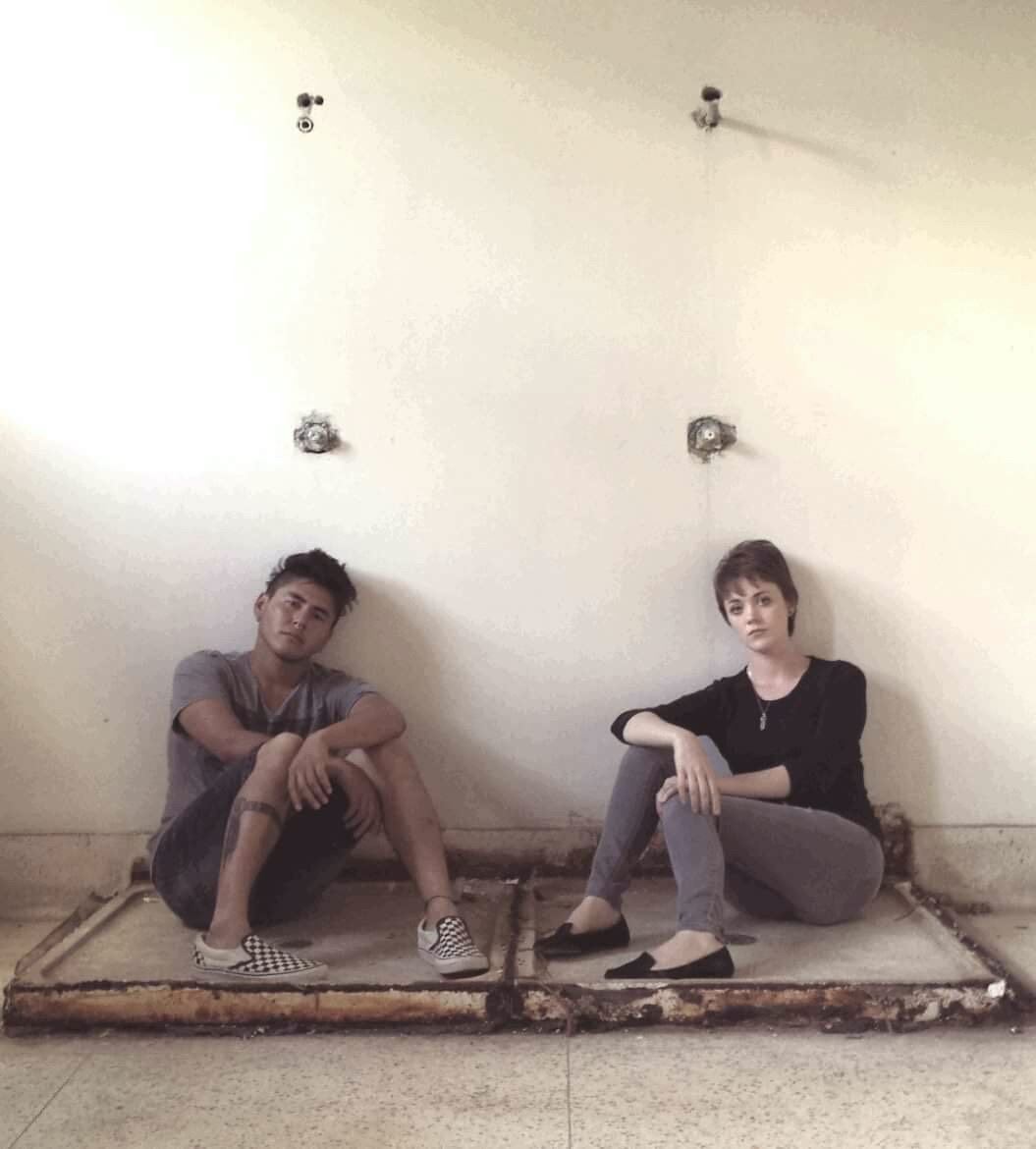





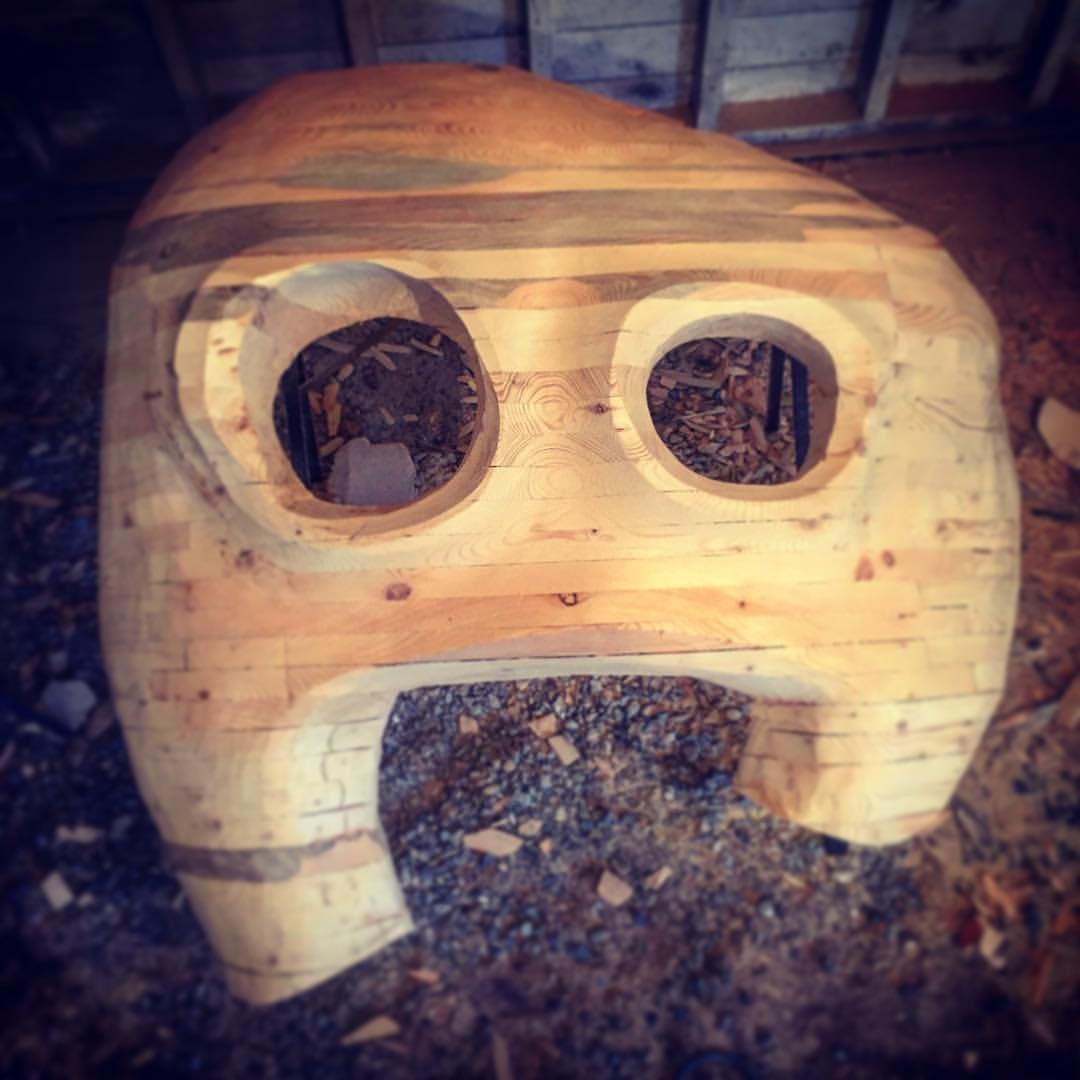

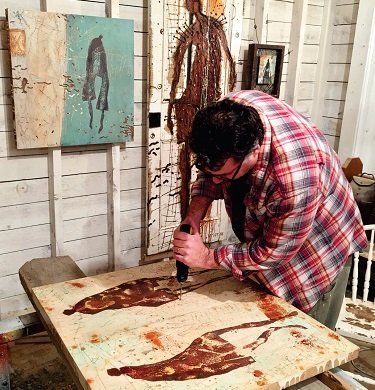
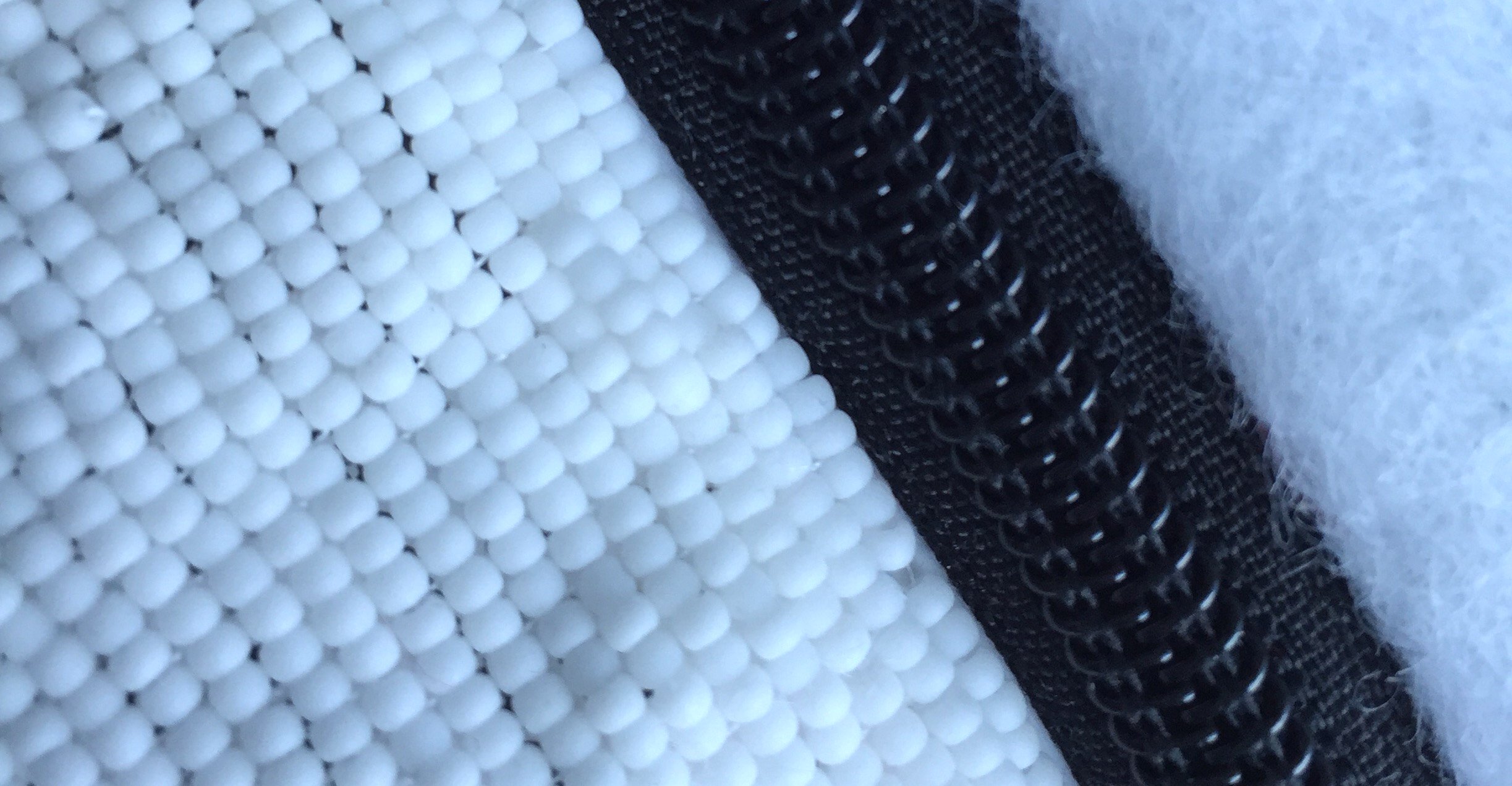
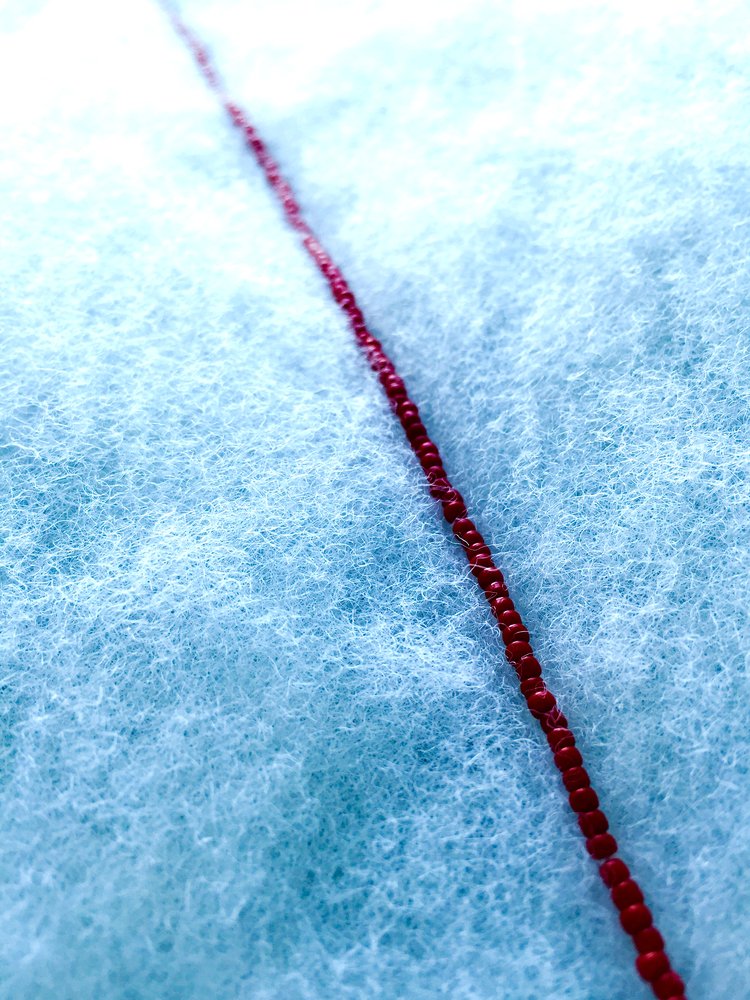
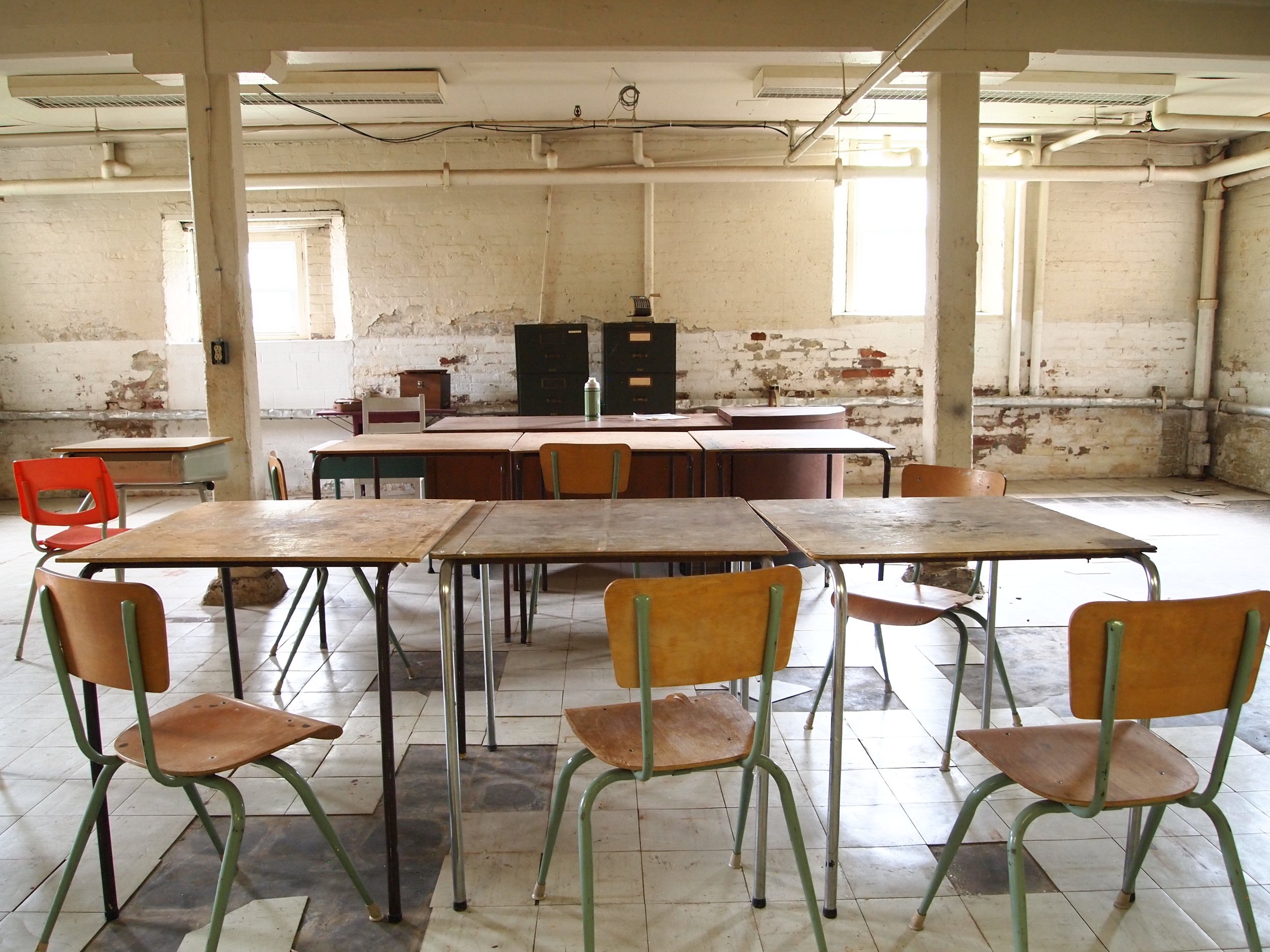
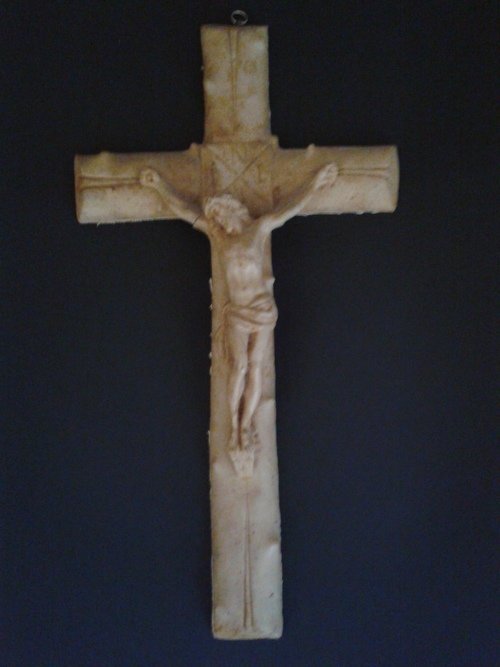
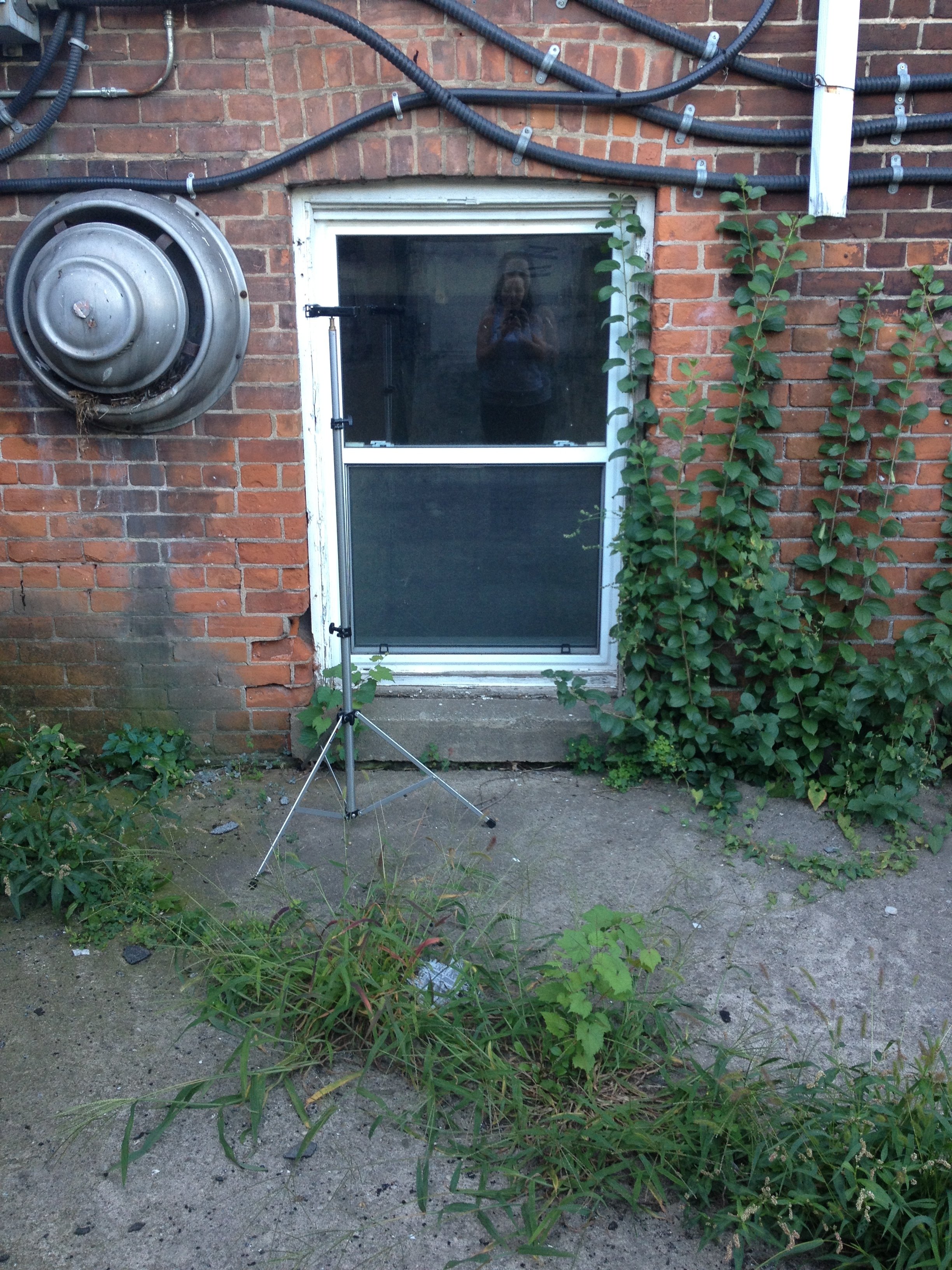
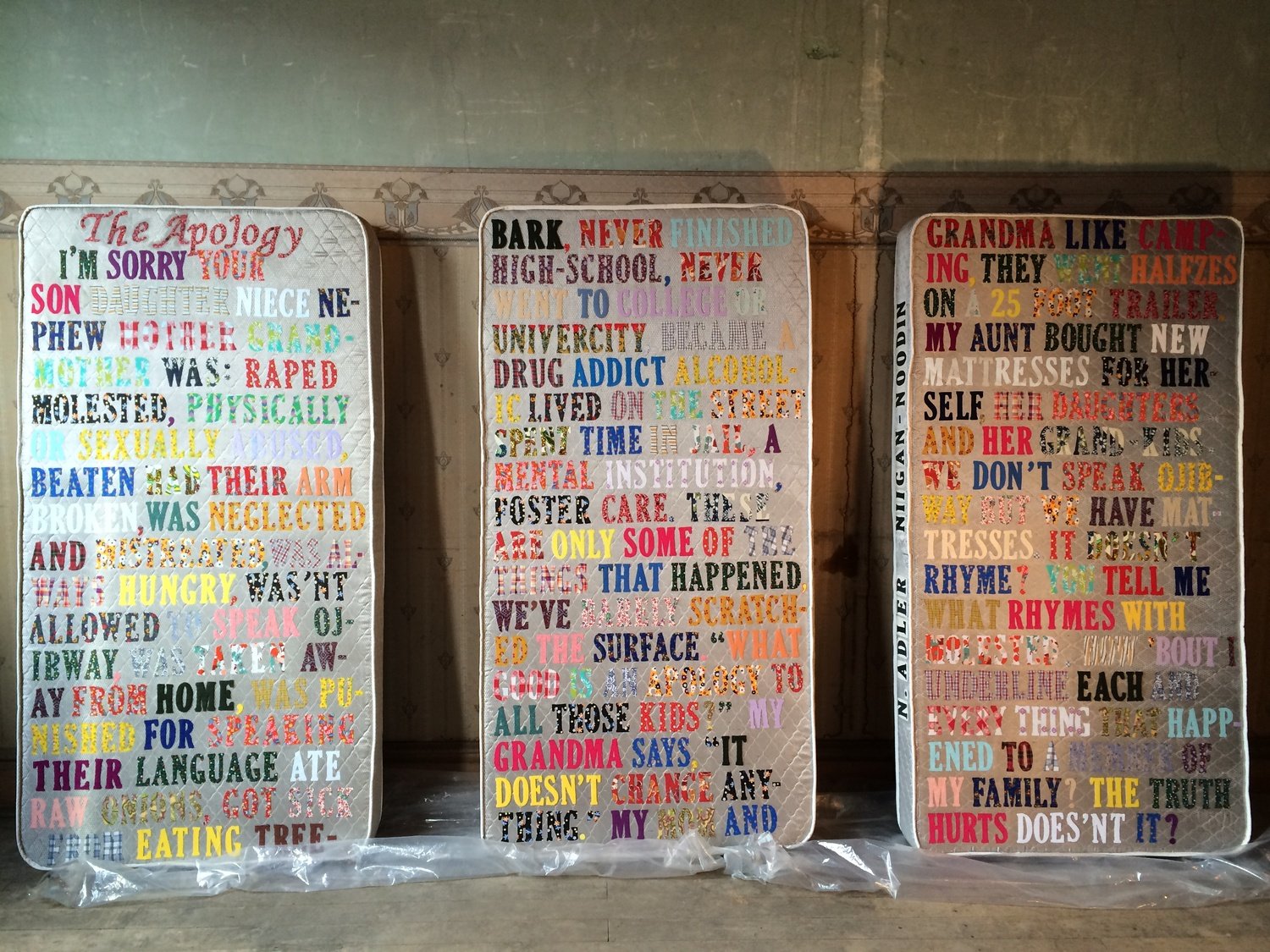

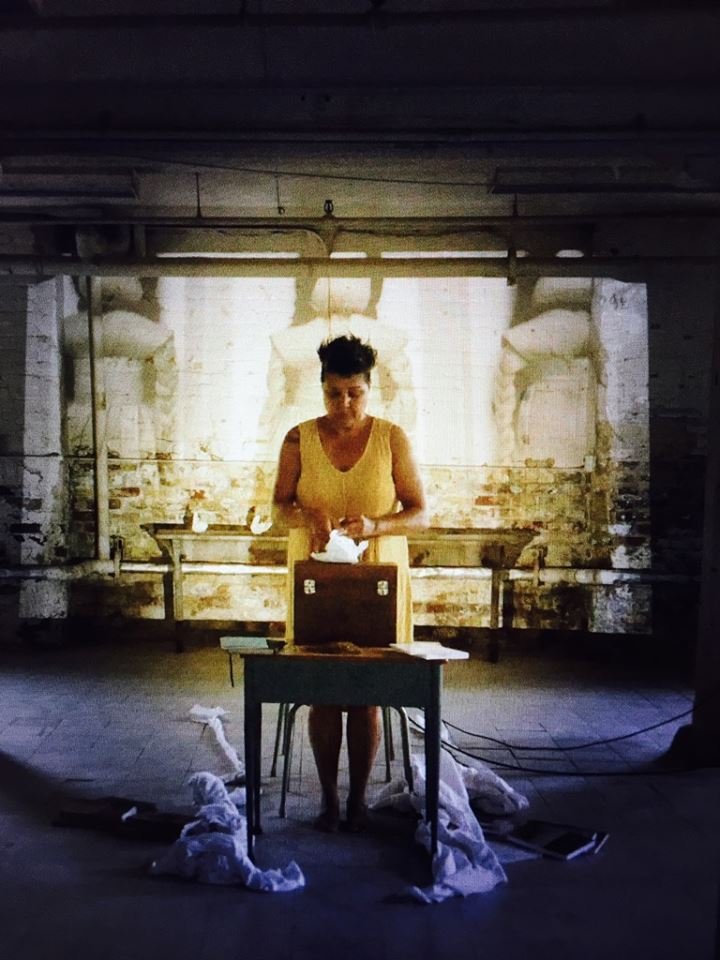
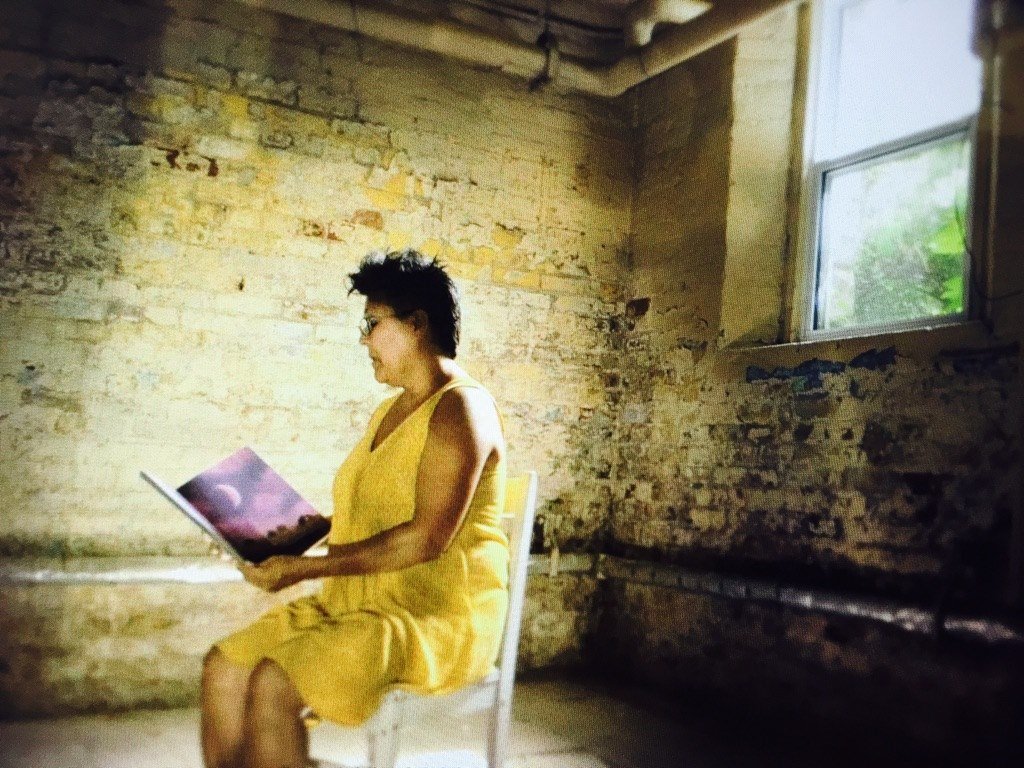


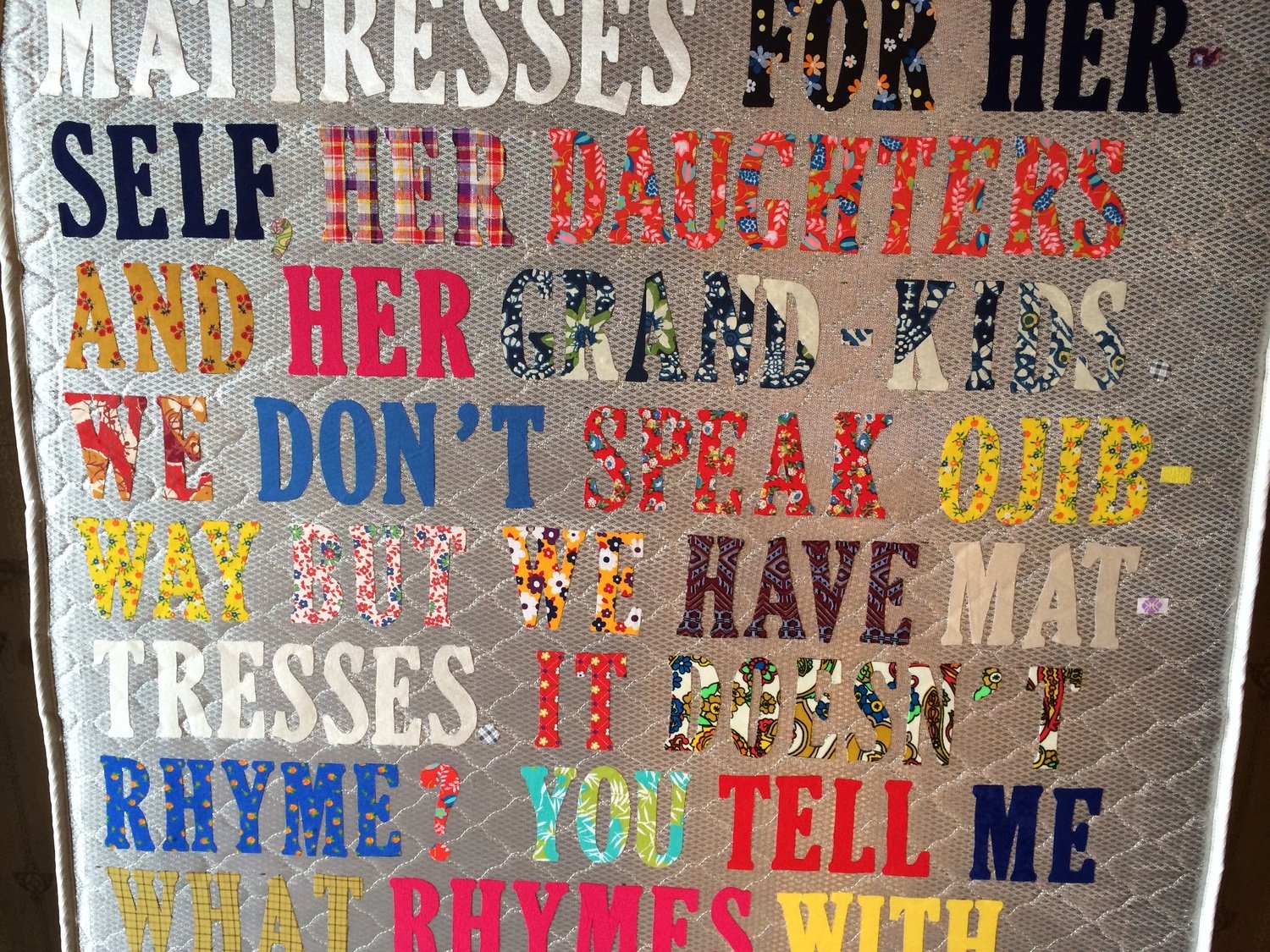
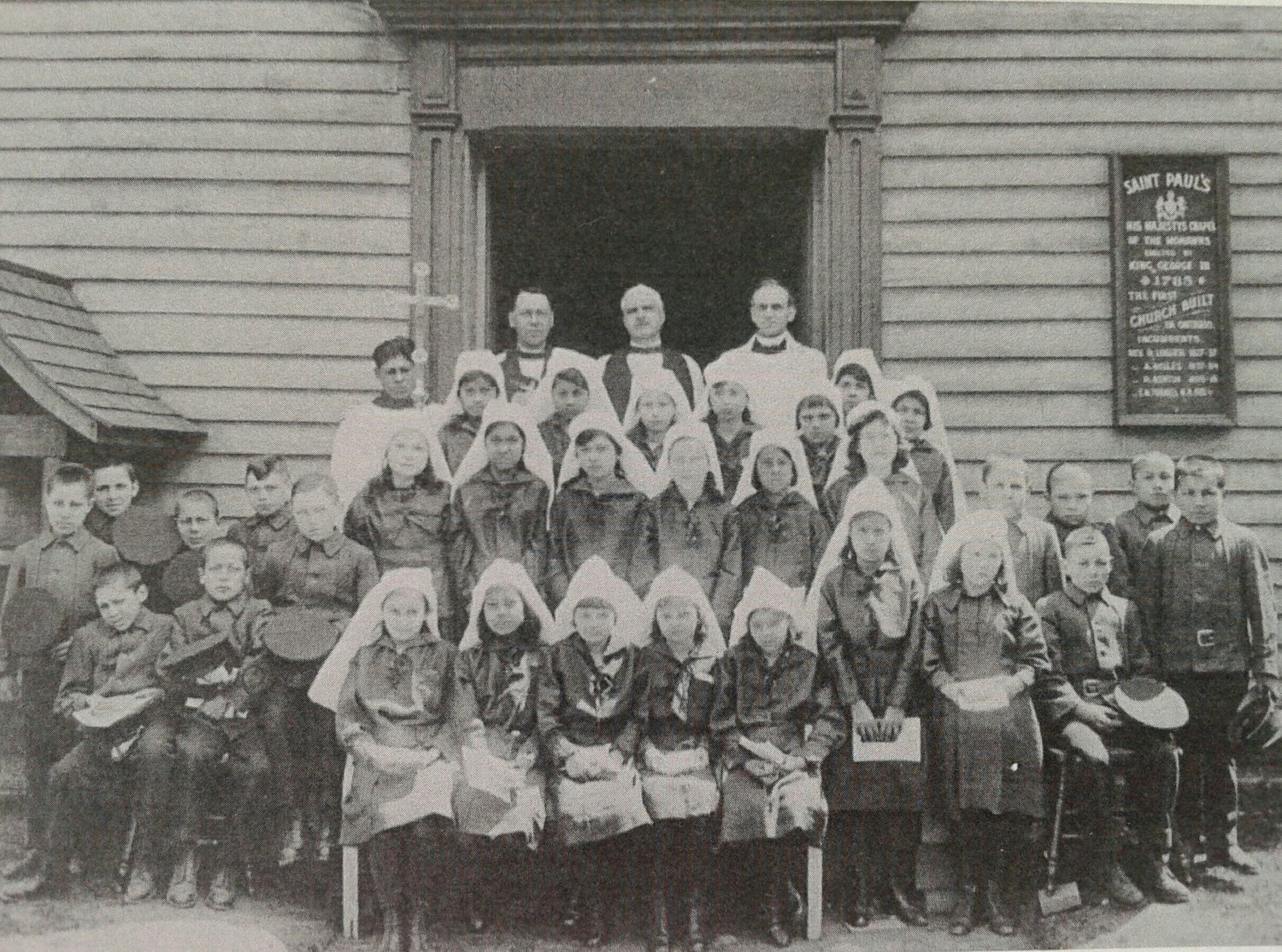
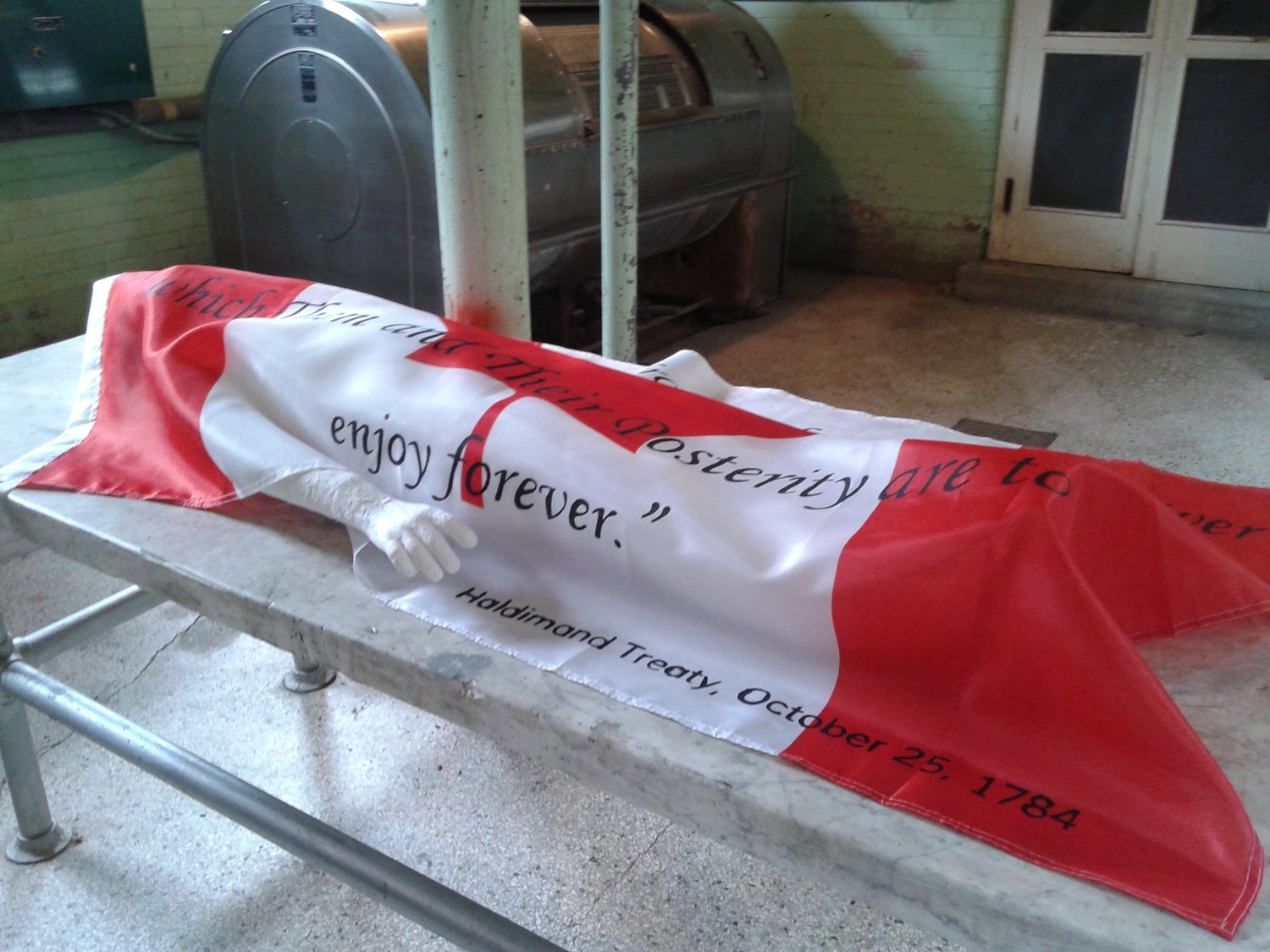
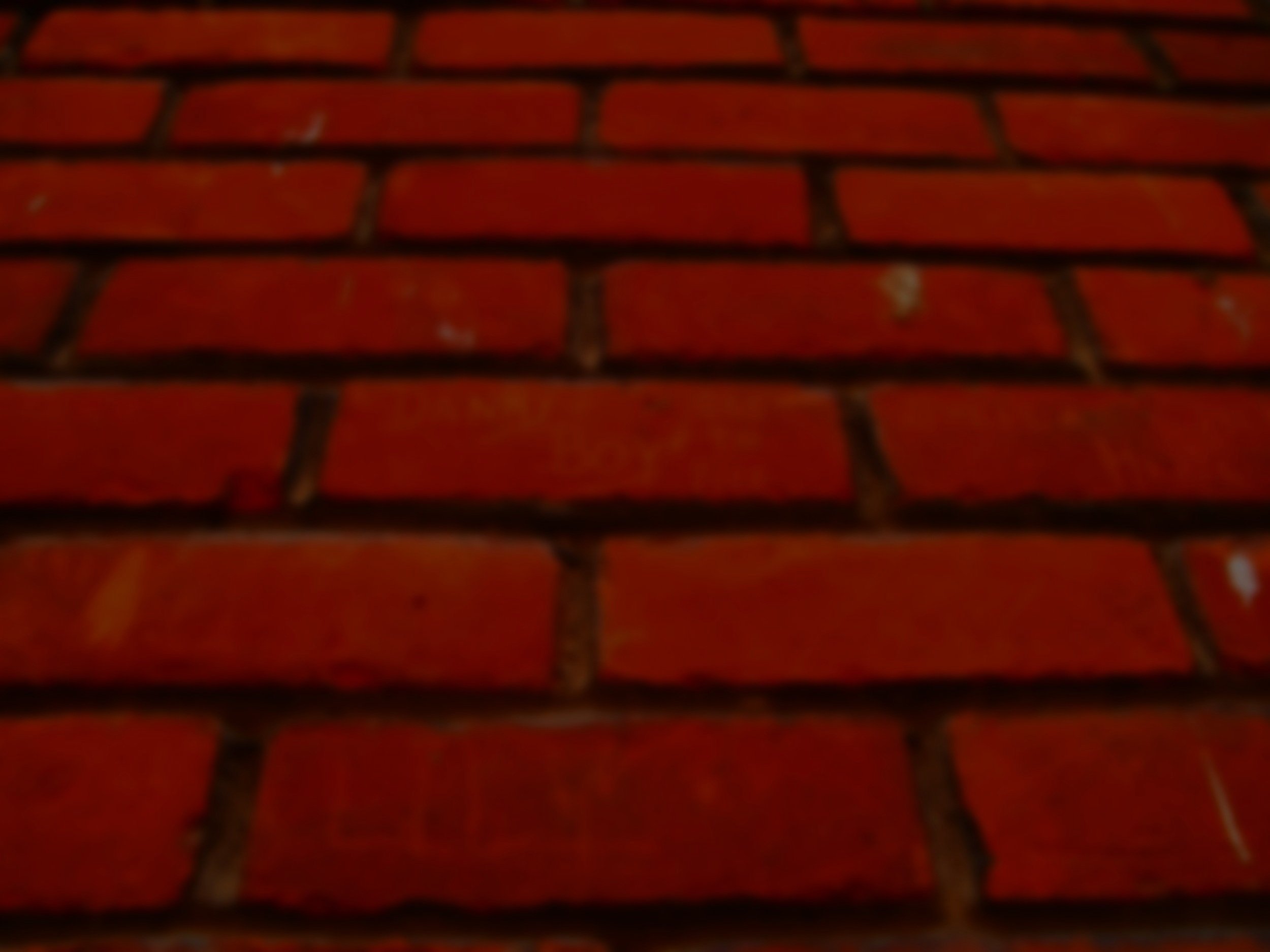
Collaborators
-
Woodland Cultural Centre (Brantford)
Native Women in the Arts (Toronto)
Waterloo Aboriginal Education Centre, St. Paul’s University College (Waterloo)
Chocolate Woman Collective (Toronto)
Six Nations Polytechnic (Brantford)
Arts Faculty, University of Waterloo, (Waterloo)
Art Gallery of Guelph (Guelph)
Canadian Clay and Glass Gallery (Waterloo)
Research Entrepreneurs Accelerating Prosperity (REAP)
(Wilfrid Laurier University and partner universities)
-
Andy Houston, Associate Professor, Theatre and Performance Studies, University of Waterloo
Janis Monture, Executive Director, Woodland Cultural Centre
Naomi Johnson, Artistic Director, Woodland Cultural Centre
Paula Whitlow, Museum Director, Woodland Cultural Centre
Amos Key Jr., Language Director, Woodland Cultural Centre
Erika Iserhoff, Artistic Director, Native Women in the Arts
Monique Mojica, playwright and artist, Chocolate Woman Collective
Sorouja Moll, Definite Term Lecturer, Department of Drama and Speech Communication, University of Waterloo
Mary McCullum Baldasaro, EdD, storyteller and educator (Waterloo Catholic District School Board)
Bó Bárdos, singer and performer, margaretbardos.ca
Luane Lentz, Coordinator, Waterloo Aboriginal Education Centre
Shawn Johnston, Event Coordinator, Waterloo Aboriginal Education Centre
Cheryl Maksymyk, Program Support, Waterloo Aboriginal Education Centre
Meghan Bunce, composer and musical director
Patricia Deadman, curator, independent curator
Rick Hill, Program Director, Six Nations Polytechnic
Kimber Sider, PhD candidate, School of English and TheatreStudies, University of Guelph
Amy Smoke, Aboriginal Student Association, St. Paul’s University and Blue Sky Singers
Lauren Burr, PhD candidate, Critical Media Lab and Games Institute, University of Waterloo
David Jensenius, Website Consultant
Kim Anderson, Indigenous Studies, Wilfred Laurier University
Kelly Laurila, Indigenous PhD Student, Songkeeper, and Facilitator ofMino Ode Kwewak N’gamowak (Good Hearted Women Singers)
Dawn Owen, Curator of Contemporary Art, Art Gallery of Guelph
Shannon Dea, Associate Professor, Philosophy, University of Waterloo
Tim Paci, Continuing Lecturer, University of Waterloo (Project Education Liaison)
Shana MacDonald, Assistant Professor, University of Waterloo (Project Media Artist)
Wendy Philpott, Communications Manager, Faculty of Arts, University of Waterloo
Jennifer Doyle, PhD candidate in English, University of Waterloo, and Summit Conference Manager
Susan Roy, Assistant Professor, History, University of Waterloo
Eugenia Xenos Anderson, Communications Coordinator, St. Paul's University College
Linda Warley, Associate Professor, English, University of Waterloo
Howard Loft, Elder, Six Nations of the Grand, Fire Keeper for Mush Hole Project and Summit
Lee Loft, Elder, Six Nations of the Grand
Shelley Niro, Multi-Disciplinary Artist; Six Nations Reserve, Turtle Clan, Bay of Quinte Mohawk
Andy Moro, Multi-Disciplinary Artist and Designer, Omushkego Cree / Mixed Euro, Article 11
Tara Beagan, Multi-Disciplinary Artist and Designer, Ntlaka’pamux and Irish “Canadian,” Article 11
Bill Poole, Executive Director, Canadian Clay and Glass
Nancy Mattes, Arts Advancement, University of Waterloo
Sylvia Hannigan, Administrative Assistant, Department of Drama and Speech Communication, University of Waterloo
Caroline Freibauer, Teacher, Assumption College, Brantford
Jean Becker, Senior Advisor: Aboriginal Initiatives, Communications, Public Affairs & Marketing, Wilfrid Laurier University
Sherlene Bomberry, Six Nations of the Grand, Open Doors to Dialogue
Emma Smith, President, Aboriginal Student Association, and Summit Conference Facilitator
Al McDonald, Six Nations of the Grand, Fire Keeper for Mush Hole Project and Summit
Kaylin Parker, Six Nations Polytechnic, Youth Workshop Instructor
Alyssa General, Six Nations Polytechnic, Art Instructor and Youth Workshop Facilitator
Zac Gungl, University of Waterloo, Theatre & Performance and Speech Communication Studies, Mush Hole Project Site Manager, Website Content Editor
Shane Powless, Woodland Cultural Centre, Mush Hole Project Site Manager
Tanis Hill, Six Nations Polytechnic, Assistant Project Co-ordinator
Robert Brown, Waterloo Male Police Chorus
Greg Campbell, University of Waterloo, Department of Drama and Speech Communication, Support Services and Technical Assistant and Communication Outcomes Coordinator
-
Pat Deadman, Artist/Curator/Writer
Andy Houston, Director, Associate Professor at University of Waterloo
Erika Iserhoff, Native Women in the Arts
Naomi Johnson, Artistic Director of Woodland Cultural Centre
Monique Mojica, Playwright/Director/Actor
Dawn Owen, Art Gallery of Guelph
Thank you to our sponsors





